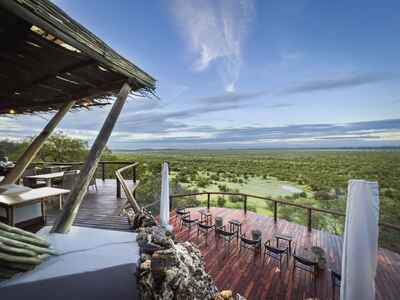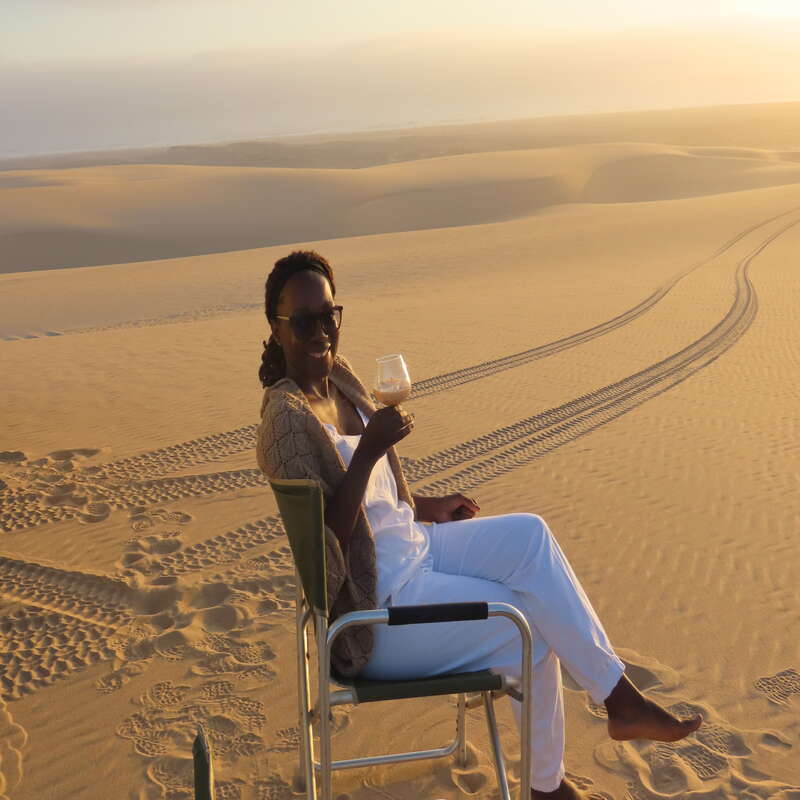About Ongava Lodge
Stunning views over the plains of its own private reserve set the scene at the smart Ongava Lodge.
And if the view is superb, so is the wildlife – perhaps to be expected in such close proximity to Etosha National Park.
With plains game aplenty on the reserve, predators are rarely far behind, but pride of place goes to both black and white rhino. Spotting these primeval giants from a game-drive 4WD is exciting in itself, but to approach white rhino on foot is an opportunity not to be missed.
Back at the lodge, every area maximises the views – and the wildlife. In the spacious, air-conditioned chalets, floor-to-ceiling glass doors open onto a veranda that overlooks the plains. At the hub of the camp, an attractive dining terrace looks down onto a floodlit waterhole. And a strategically placed hide allows you to get even closer to the animals.
In this exclusive setting, comfort is the watchword. Wander down to the pool for a cooling afternoon dip, or freshen up before dinner in your open-air shower. Then order a drink at the bar, and take in the Namibian night sky from the terrace. Or, come the cooler evenings, cosy down around a wood fire with a book from the library. And if you’re lucky enough to spot rhino at the waterhole, that’s a further bonus.
Our view
Ongava Lodge remains a luxurious place to stay as a base to explore Etosha National Park. Its far-reaching views, productive waterhole and photographic hide are just some of the highlights of a stay here. Moreover, its exclusive location on a large private reserve, with a well-established resident population of white and black rhino, and excellent general game viewing, also make it a destination in its own right. Opportunities to do rhino tracking, walking safaris and night drives on the reserve are an added bonus!
Accommodation
14 chalets
Children
Best for 14+
Open
All year
Activities

4WD Safari

Birdwatching

Guided walking safari

Night drive

Private activities
Traveller reviews of Ongava Lodge
174 real, un-edited reviews from Expert Africa's travellers.
Arrived 4 Jun 2025, 2 nights
"Ongava Lodge review"
Overall rating: Excellent
Arrived 29 May 2025, 2 nights
"Ongava Lodge review"
Overall rating: Excellent
Arrived 19 Apr 2025, 2 nights
"Wonderful staff"
Overall rating: Excellent
Arrived 16 Apr 2025, 3 nights
"Ongava Lodge review"
Overall rating: Good
Arrived 30 Dec 2024, 3 nights
"Ongava Lodge review"
Overall rating: Excellent
Arrived 17 Oct 2024, 2 nights
"Ongava Lodge review"
Overall rating: Excellent
Arrived 14 Oct 2024, 3 nights
"Ongava Lodge review"
Overall rating: Excellent
Arrived 7 Oct 2024, 3 nights
"Ongava Lodge review"
Overall rating: Excellent
Arrived 24 Sep 2024, 2 nights
"Ongava Lodge review"
Overall rating: Excellent
Arrived 13 Sep 2024, 2 nights
"Ongava Lodge review"
Overall rating: Excellent
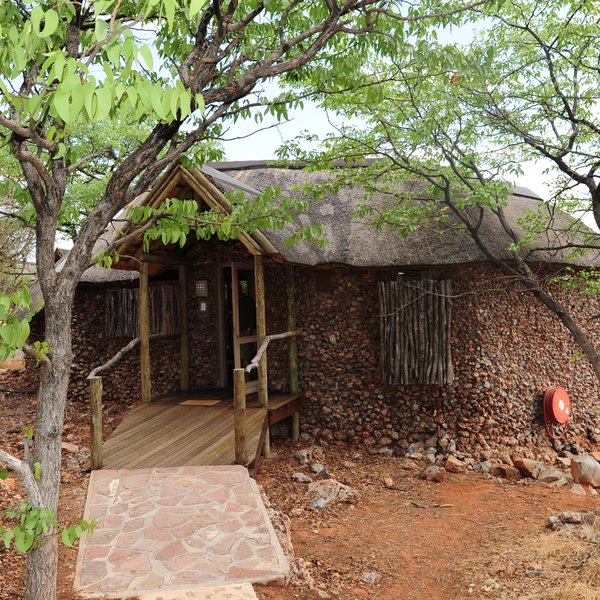
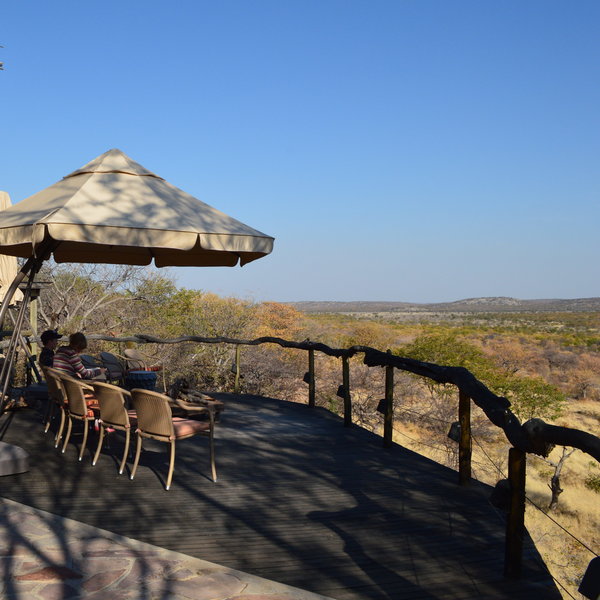
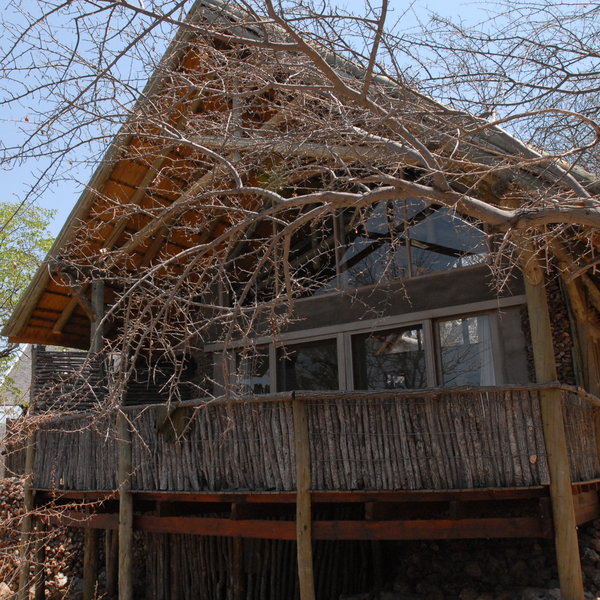
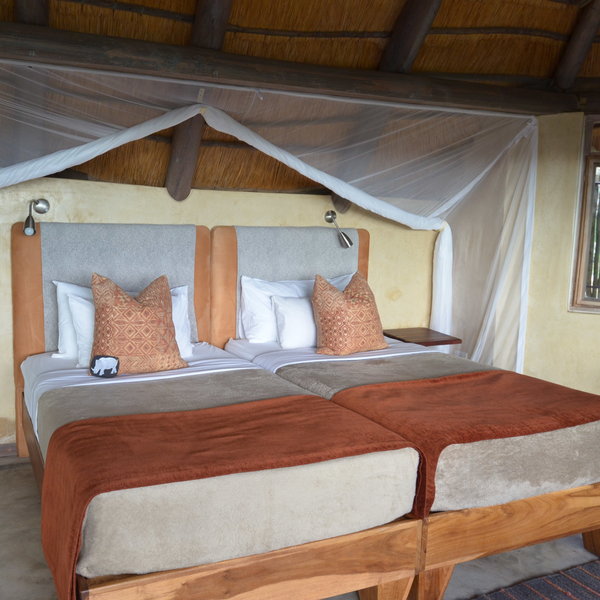
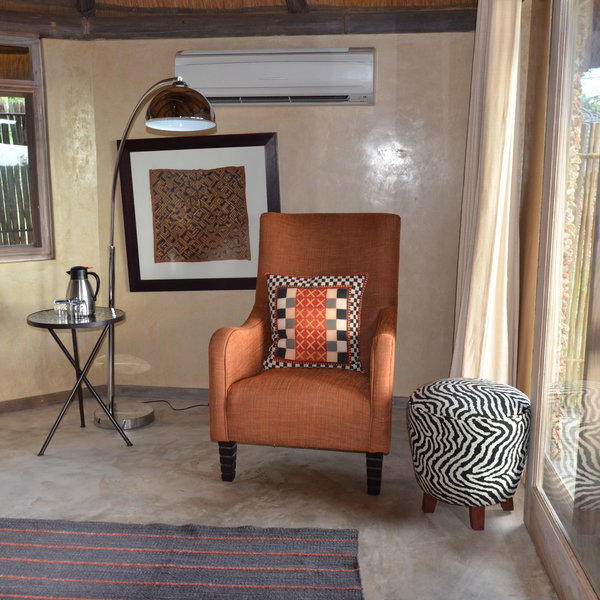
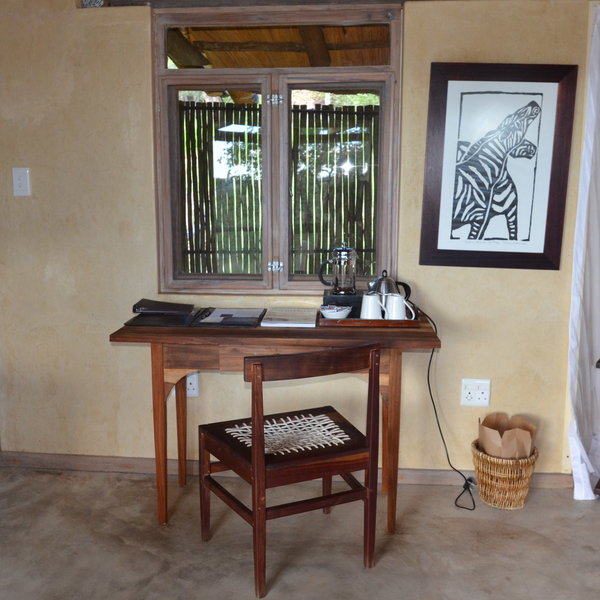
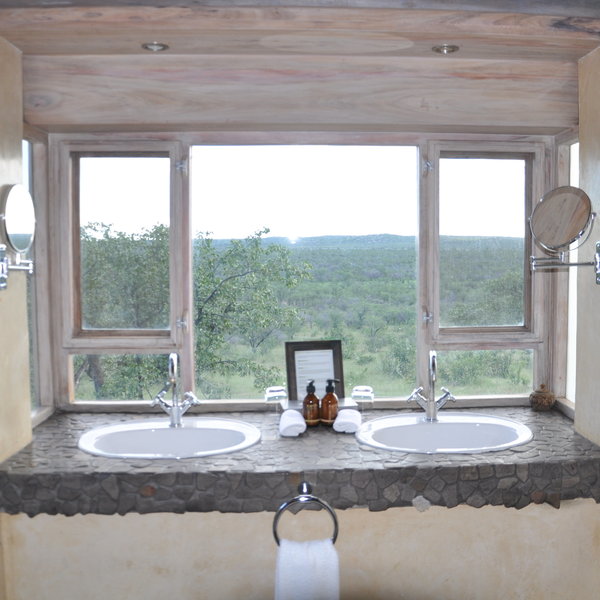
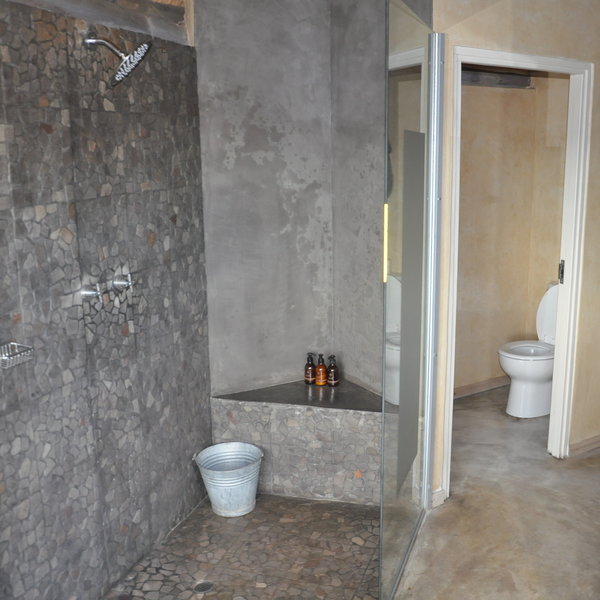
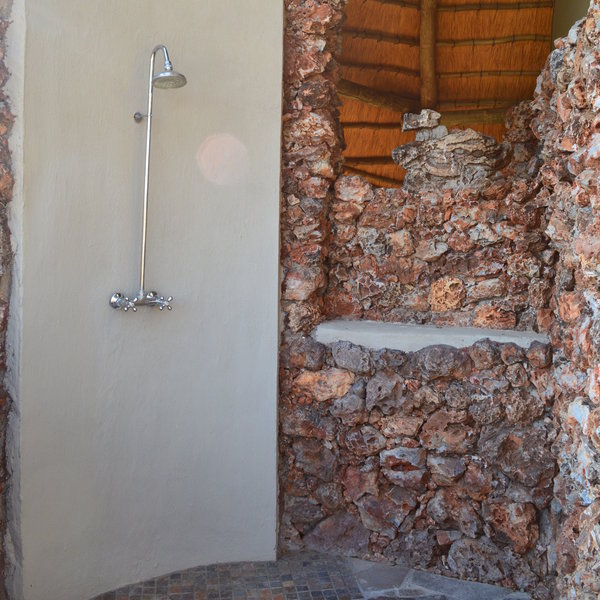
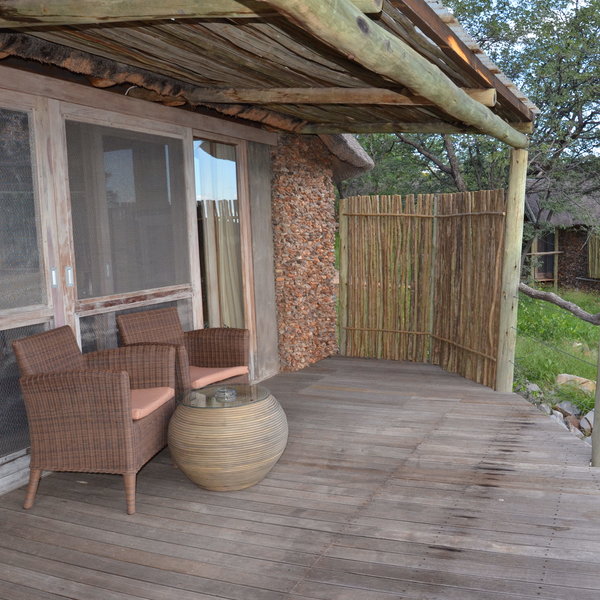
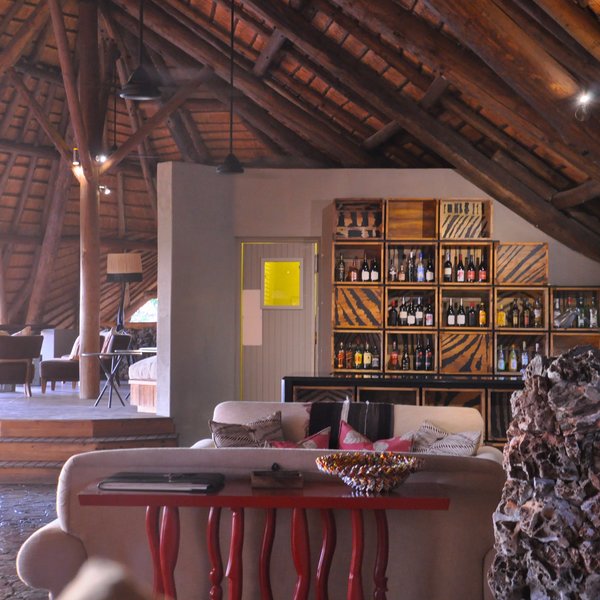
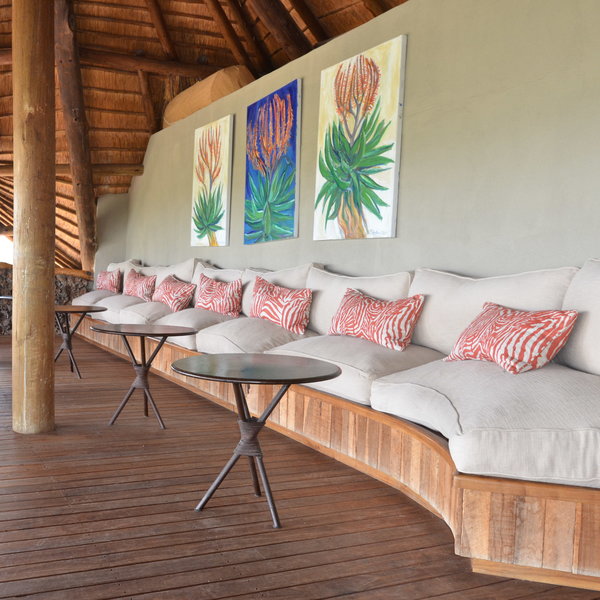
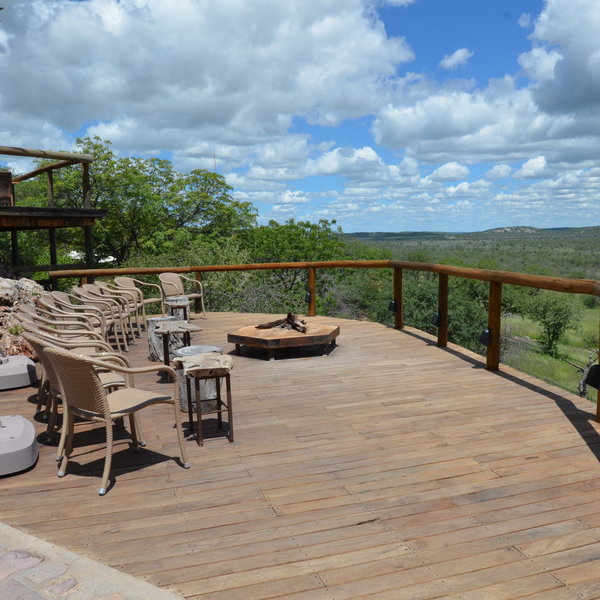
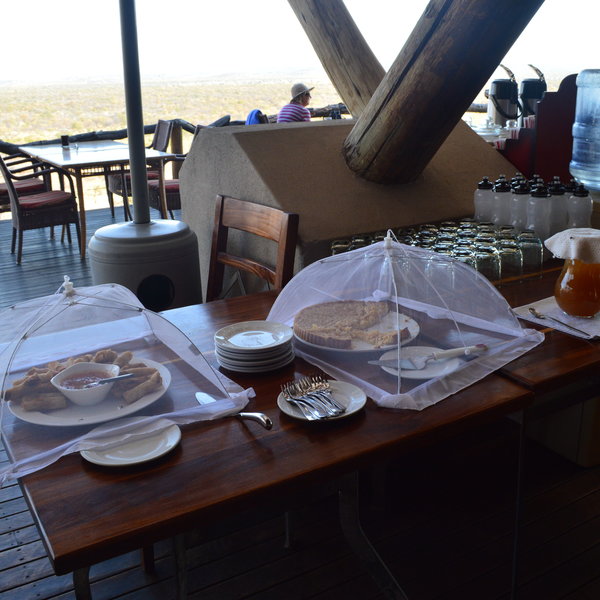
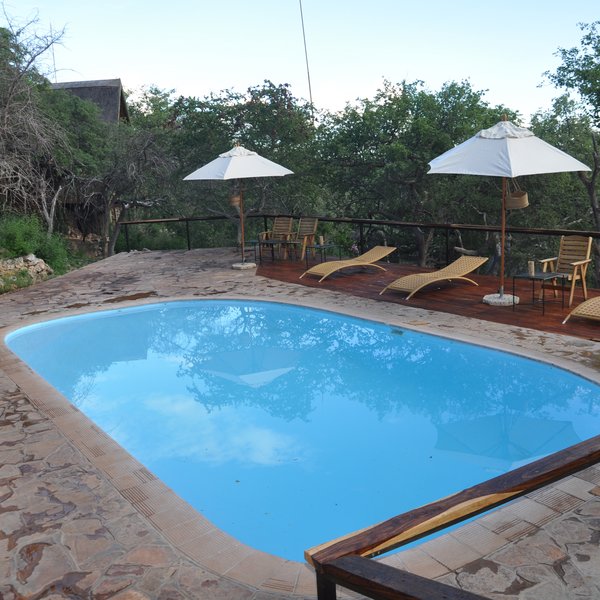

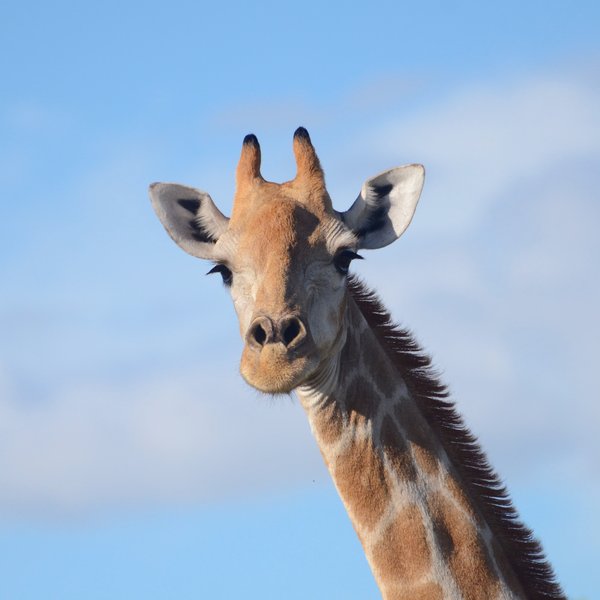
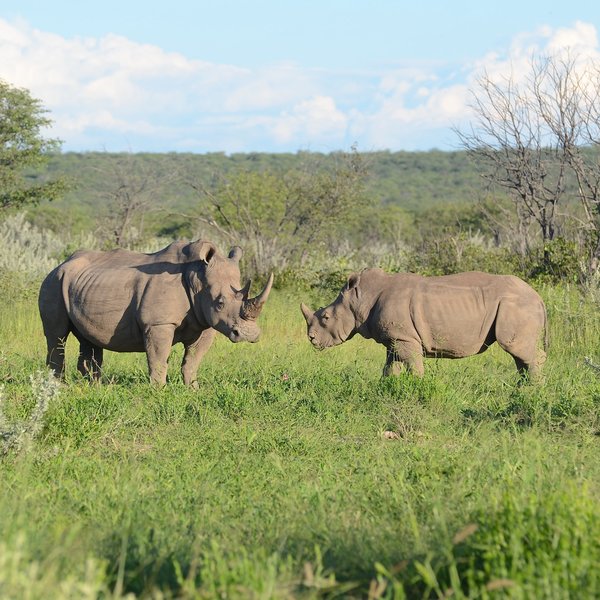
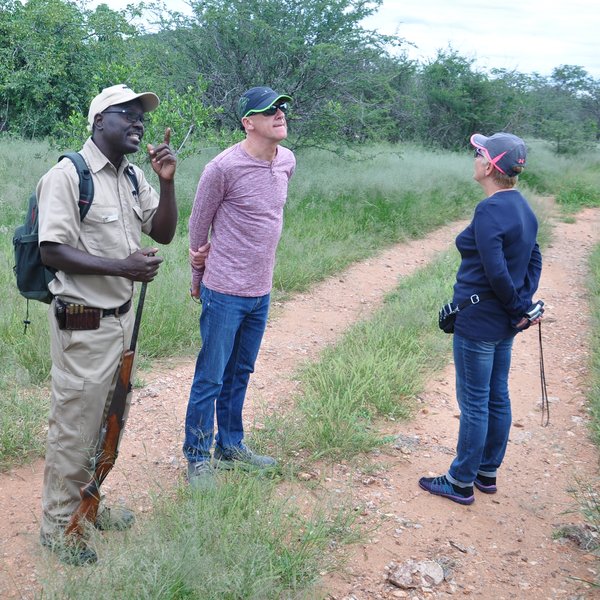
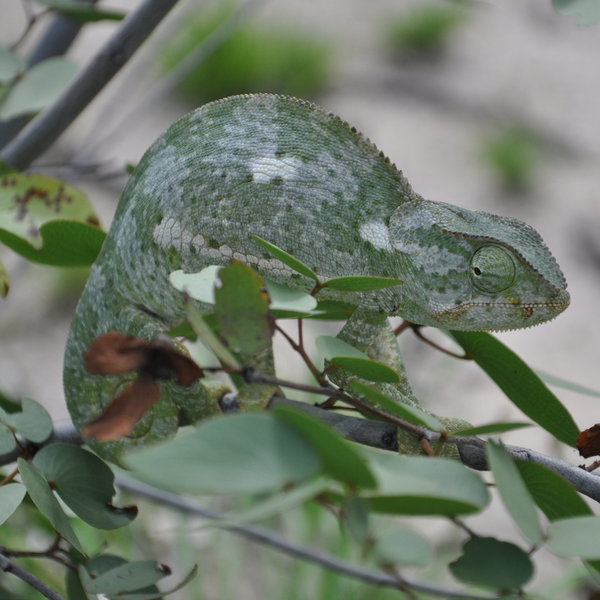
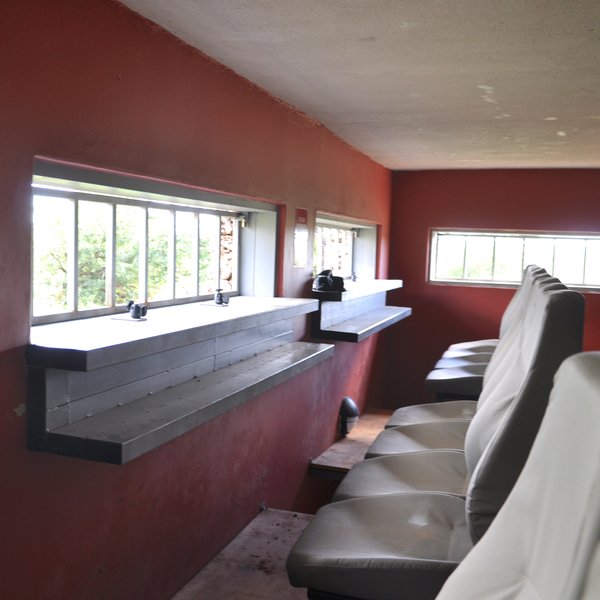
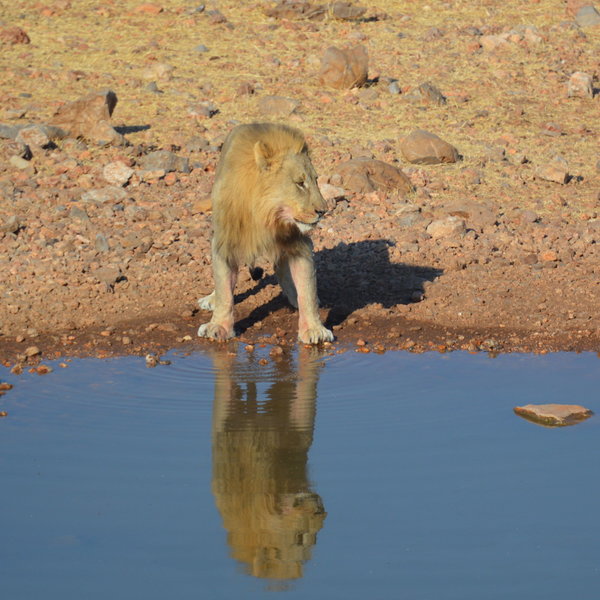
Expert Africa's gallery
When we travel we take lots of photos ourselves to give you a real and un-edited view of the safaris. See our 49 pictures of Ongava Lodge to get the candid view.
View gallerySafaris visiting Ongava Lodge
Just ideas, we'll always tailor-make a trip for you
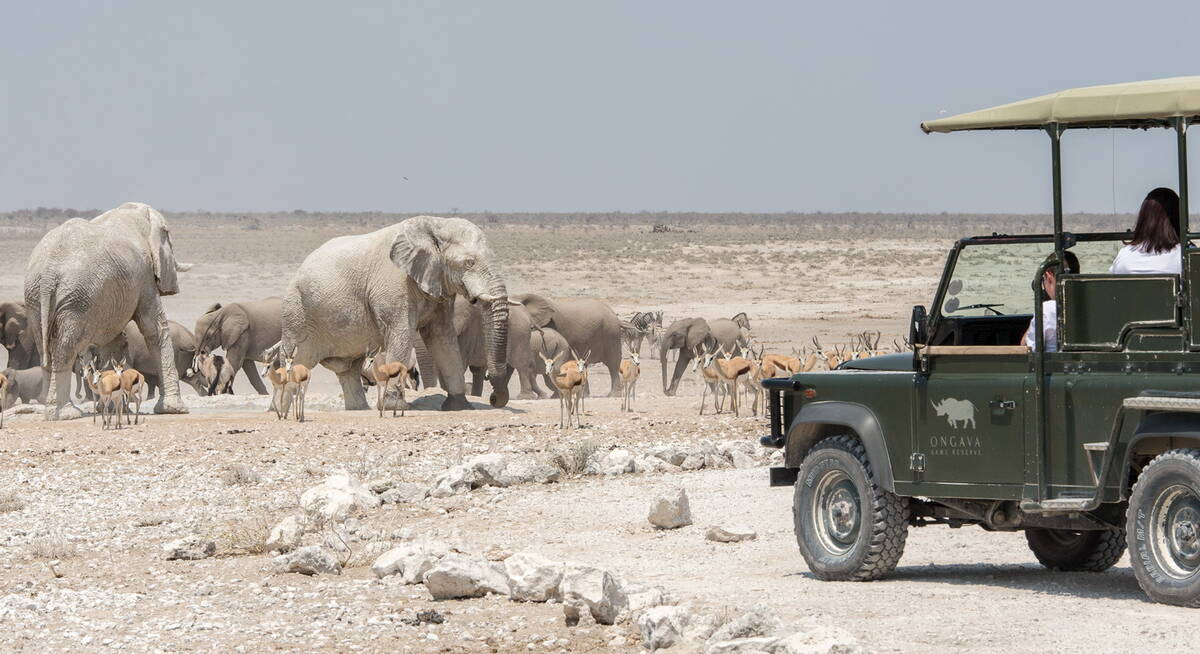
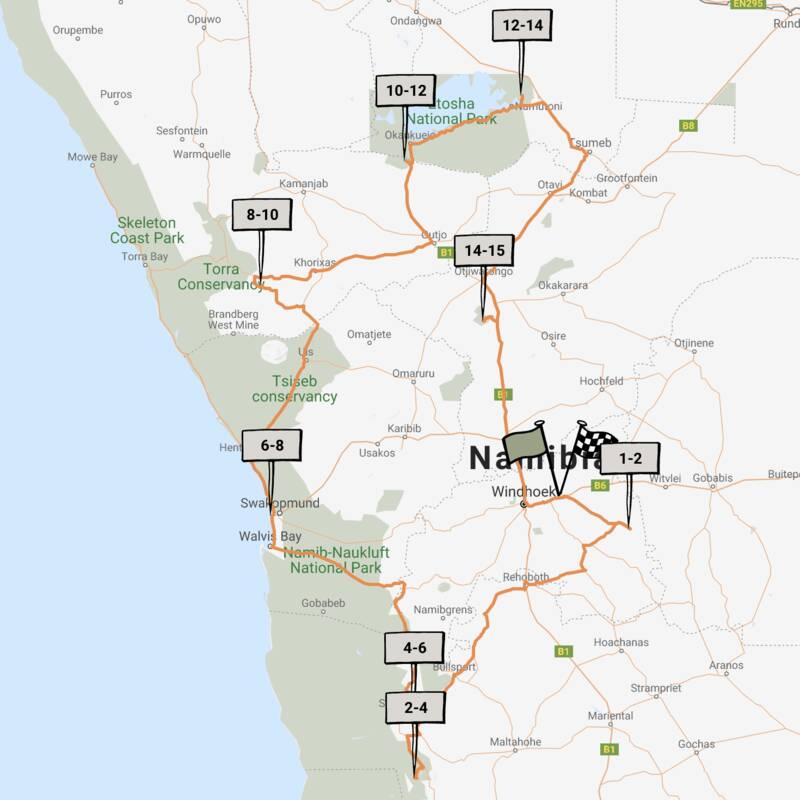
Brown Hyena Self-drive
14 days • 8 locations • 1 country
WINDHOEK AIRPORT TO WINDHOEK AIRPORT
The perfect trip for those who want to mix the adventure and freedom of a self-drive with some of our favourite luxury camps in Namibia and a great mix of activities.
Visiting Okonjima, Namib-Naukluft and 5 other areas
US$10,070 - US$10,210 per person
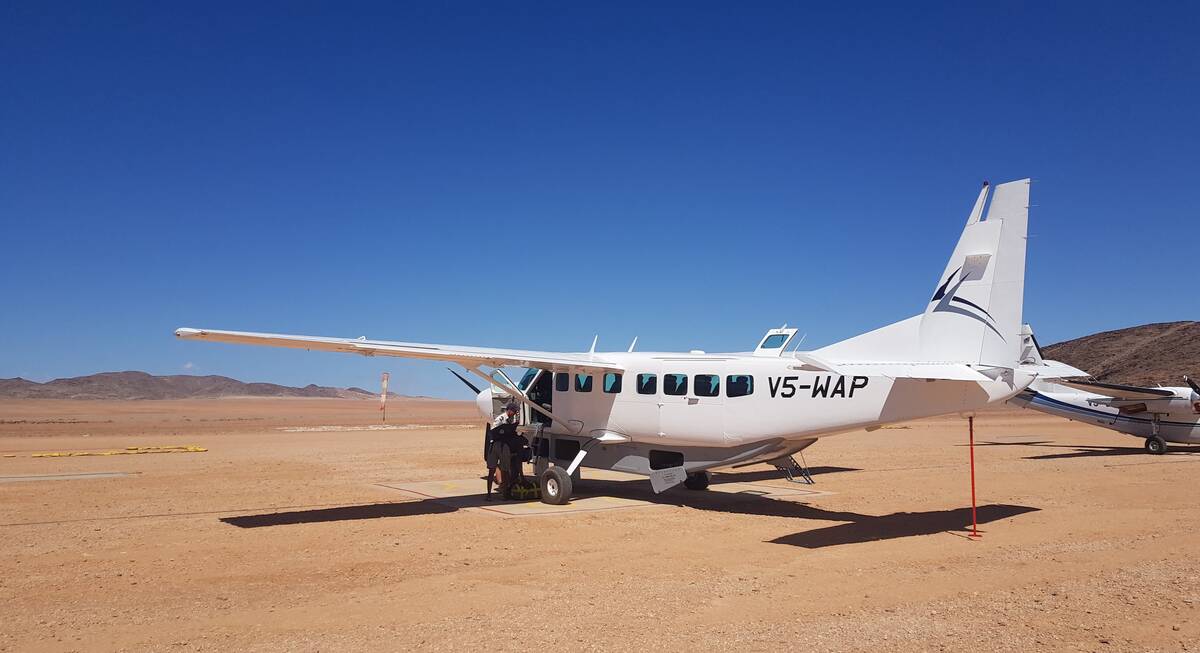
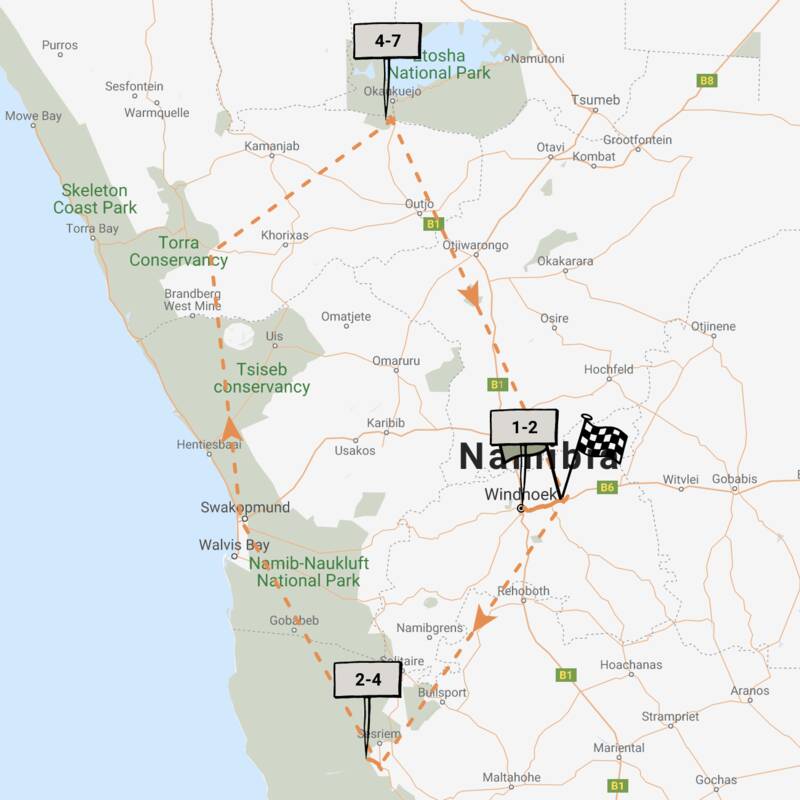
Flamingo Fly-in Safari
6 days • 3 locations • 1 country
WINDHOEK AIRPORT TO WINDHOEK AIRPORT
Short on time but big on experience, this luxury fly-in safari takes in Sossusvlei’s famous dunes and Etosha National Park’s captivating wildlife with stays at two excellent luxury lodges.
Visiting Namib-Naukluft, Etosha and 1 other area
US$6,970 - US$6,970 per person
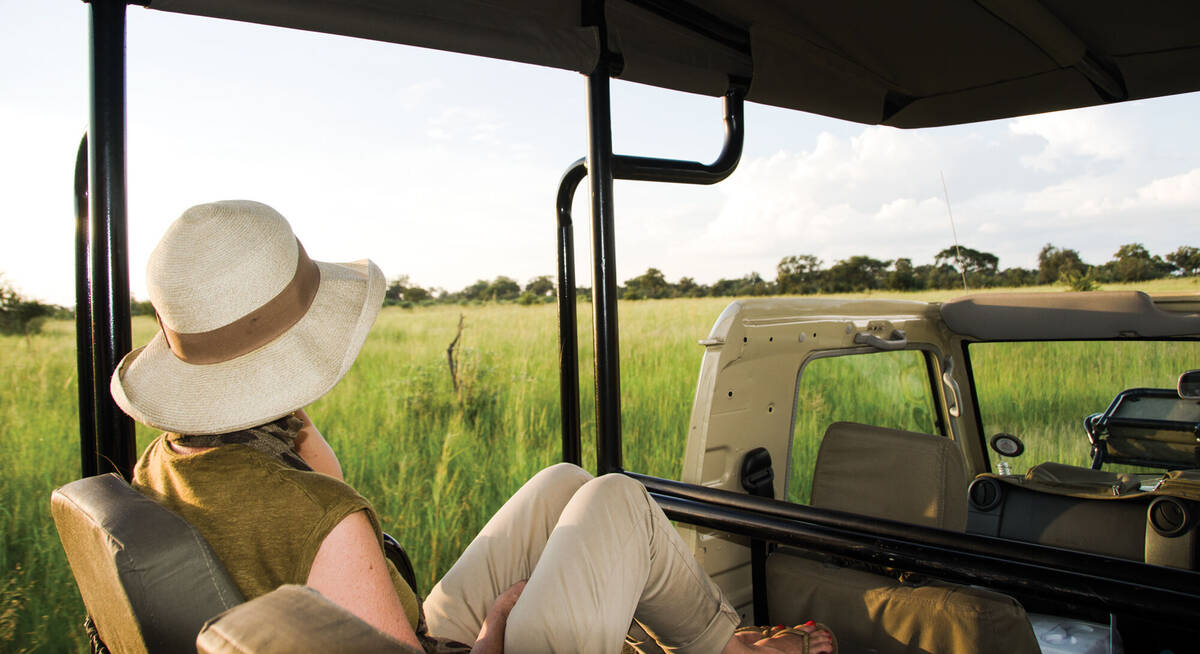
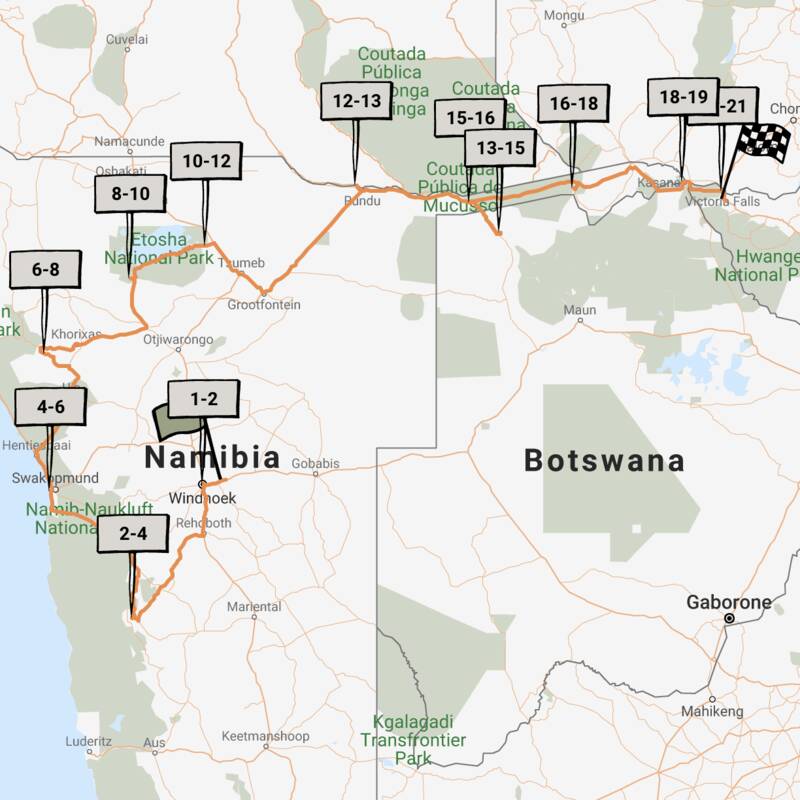
Rock Hare Self-drive Safari
20 days • 12 locations • 3 country
WINDHOEK AIRPORT TO VICTORIA FALLS AIRPORT
An in-depth look at Namibia from the Namib Desert to the Caprivi, with additional stops in Botswana and Victoria Falls. This three-week adventure includes an unrivalled mix of environments and is great value.
Visiting Etosha, North-west Kalahari and 7 other areas
US$8,390 - US$8,510 per person
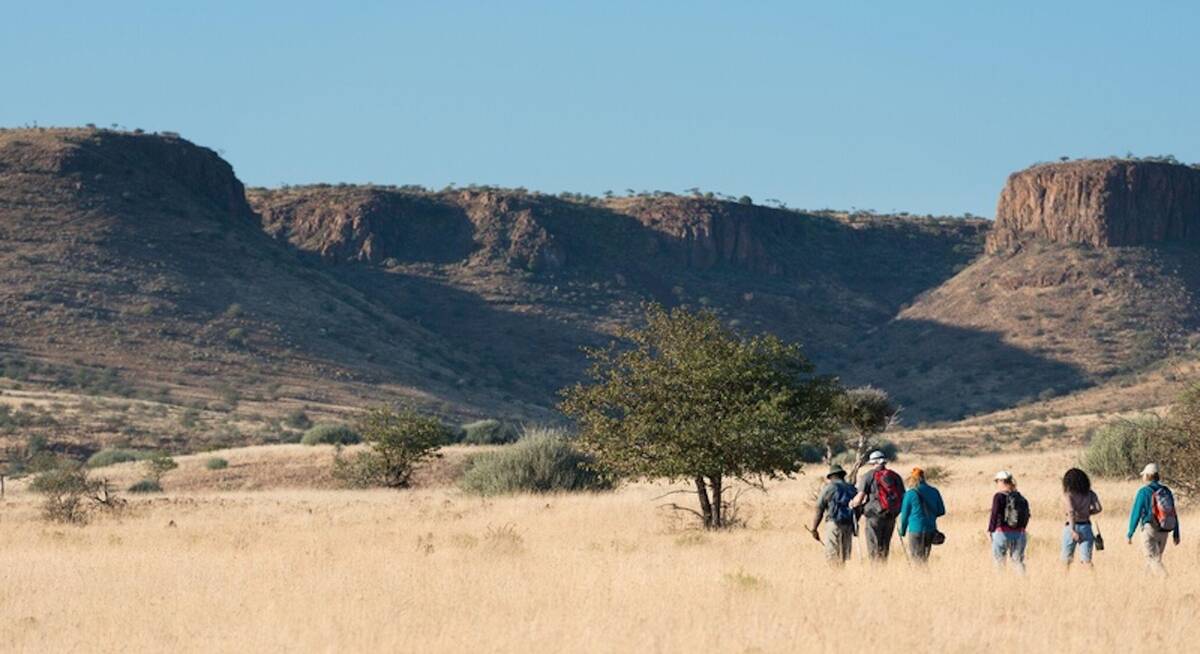
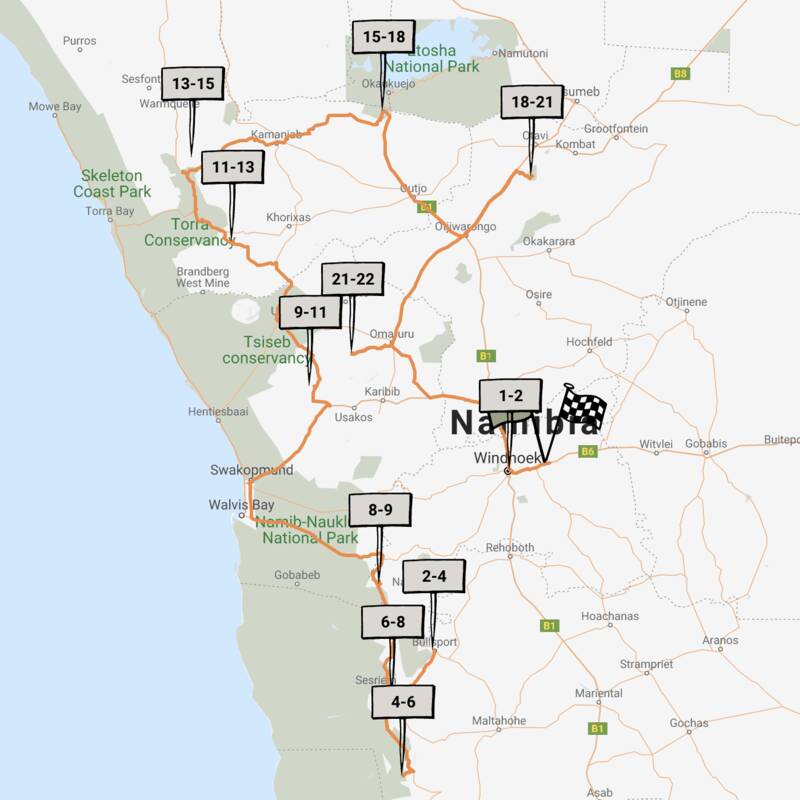
Chongololo Self-drive Safari
21 days • 11 locations • 1 country
WINDHOEK AIRPORT TO WINDHOEK AIRPORT
This self-drive safari focuses on the best walking experiences in Namibia. Get your boots ready for the apricot dunes of the Namib Desert and the ancient hills of Damaraland.
Visiting Central Highlands, Namib-Naukluft and 4 other areas
US$10,090 - US$10,220 per person
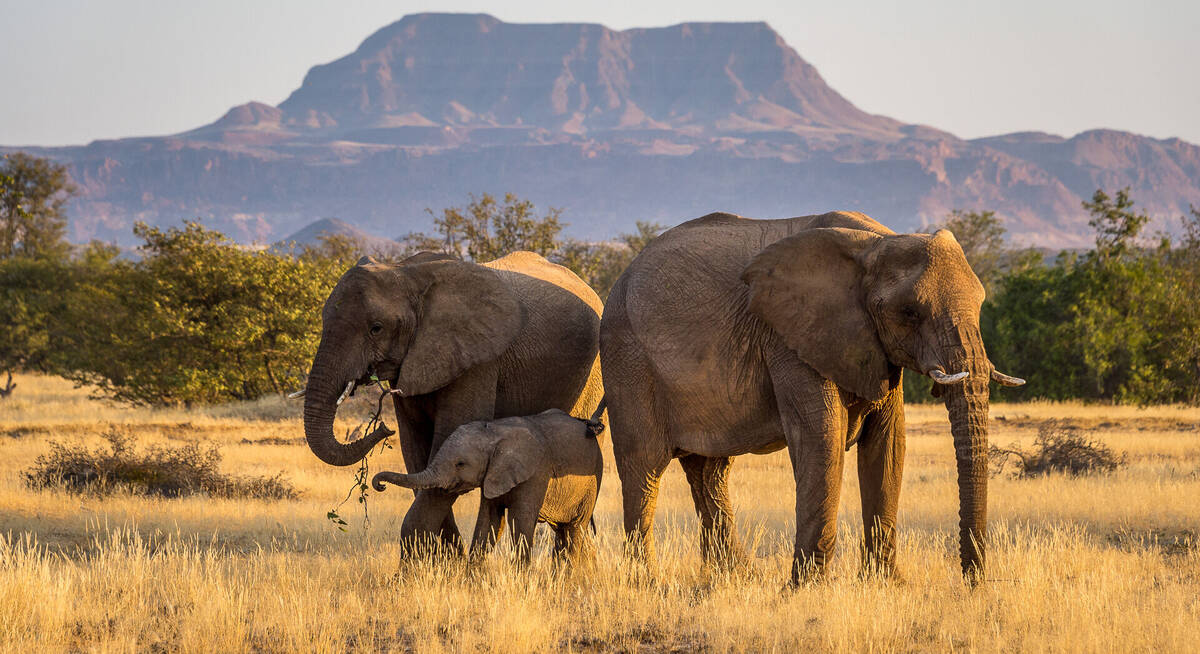
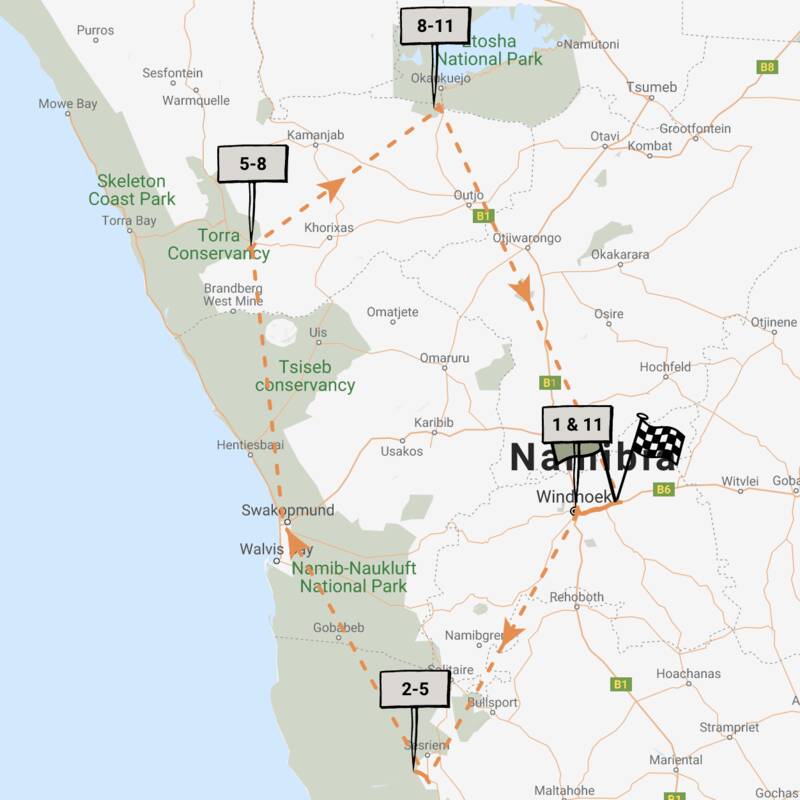
Hoopoe Fly-in Safari
11 days • 4 locations • 1 country
WINDHOEK AIRPORT TO WINDHOEK AIRPORT
This relaxed fly-in safari reveals Namibia at its best. Generous timings and a wide choice of activities help travellers to enjoy the best of the country’s most spectacular areas.
Visiting Windhoek, Namib-Naukluft and 2 other areas
US$8,200 - US$10,580 per person
Ongava Lodge: Our full report
Perched on the top of a small kopje, Ongava Lodge has stunning views of the plains below.
Started in the early 1990s, this was the original "luxury game lodge" near Etosha, sitting on the private Ongava Game Reserve, which borders the southern side of Etosha National Park near the Andersson Gate, south of Okaukuejo.
With such close proximity to Etosha National Park, the 320km2 Ongava Reserve is noteworthy in its own right. There's a fence between the two, but smaller game can usually move between them – and there are plenty of instances of larger wildlife breaking through. Most native plains game occurs on the property, including springbok, gemsbok, blue wildebeest, zebra, red hartebeest, giraffe, eland, Damara dik-dik, steenbok and klipspringer. Ongava also has what's said to be the largest population of black-faced impala outside of Etosha, plus a healthy population of predators, including lion, leopard, hyena and black-backed jackal.
Both black and white rhino have been successfully reintroduced onto the reserve, and although rhino are becoming increasingly rare, we've been very fortunate to have had some great sightings here. Although we didn't have time for any activities on our last visit in May 2022, our stay in March 2017 was particularly memorable! Whilst on an afternoon game drive on the reserve, our guide located two white rhino - mum and calf - peacefully grazing in a clearing. This was exciting enough in itself as we had a pretty good view from the vehicle, but our guide invited us to get closer… Like most guides at Ongava, he was an expertly trained walking guide, so after a short safety briefing and armed with a rifle, we approached the rhino on foot, cautiously walking towards them in a single file. We stopped in the cover of some bushes about 70m away and spent the next 20 minutes happily observing them and getting some great photos! And it doesn’t stop there – minutes before locating a sundowner spot, a black rhino bull crashed out of the mopane trees ahead of us!
Birdwatching on the Ongava Reserve can also be very good, with a number of endemic (or near-endemic) species found here, including the bare-cheeked babbler, violet wood-hoopoe, Carp's tit and Monteiro’s hornbill.
Ongava Lodge has 14 stone-and-thatch chalets. These spacious chalets are tastefully decorated in neutral tones with russet-coloured throws and cushions, adding warmth and stylish black and white animal prints adorning the walls. The large beds face floor-to-ceiling glass doors that let in plenty of light and open onto a private wooden veranda with far-reaching views across the plains. Each room has air conditioning and an overhead fan, 24-hour 220V electricity and an international plug socket, tea- and coffee-making facilities and large mosquito nets around the beds. The en-suite bathroom has twin hand basins, a large walk-in shower, and a separate toilet. A selection of complimentary toiletries is provided, as well as gowns and a hairdryer for guests' use. There's an outdoor shower, too, in all of the chalets except the family unit. This family chalet has two separate en-suite bedrooms joined by a shared wooden deck.
The hub of Ongava Lodge itself is the main lounge, bar and dining area, which has impressive views down to the waterhole below and across to the unpronounceable Ondundozonanandana hill range. The large lounge has a central fireplace around which comfy sofas are arranged; several separate seating areas also help create more intimate spaces. Adjoining the lounge is the bar to one side and a small library to the other. A few steps down from the lounge brings you to an open-sided wooden deck, where numerous pretty pink granite-topped tables are set up, so it’s possible to enjoy your meal whilst keeping a watchful eye on the waterhole. Indeed, on previous visits we’ve had the privilege of seeing rhino come to drink at the floodlit waterhole during dinner. Next to the main area, there is also an inviting swimming pool.
Activities at Ongava Lodge, as at its sister lodges on the reserve – Little Ongava, Ongava Tented Camp, and Andersson's at Ongava – focus firmly on game safaris. And, in our experience over many years, the guides here have generally been good and very knowledgeable. The lodge offers guided 4WD game, guided walking safaris on the reserve – an activity that’s not widely available in the Etosha area – and rhino tracking. Ongava also has a hide just metres away from the waterhole near camp. The hide is equipped with comfortable seats and even has camera mounts, so it provides a great opportunity for photographers to get some really close-up wildlife photos. However, it is popular, so when the lodge is full, guests are requested to "reserve" visits in advance.
The scope of game drives from Ongava Lodge varies. Typically, morning drives venture into the Okaukuejo area of Etosha National Park, and afternoon drives explore the Ongava Reserve. All use open-topped vehicles, which are a relatively unusual sight within the national park itself. The rhino-tracking activity, which is conducted on foot, takes place in the dry season when the vegetation is lower and visibility is better. During the rains, guides are still able to approach rhino, but this is carried out as part of an afternoon game drive, whereby the guide takes a rifle along, and if rhino are spotted on the drive, they may stop and walk guests in closer if it's deemed safe. At Ongava, only white rhino are approached on foot as they are considered to be less temperamental than their black cousins. Guests staying here can also visit the Ongava Research Centre at Anderssons' for a completely different way to while away a few hours, usually as part of an afternoon activity.
Activities
4WD Safari
Birdwatching
Guided walking safari
Night drive
Private activities
Families & children
- Attitude towards children
- Ongava Lodge says that children over the age of six years are ‘accepted’, rather than welcomed.
- Property’s age restrictions
- The lodge has a minimum age restriction of six years for children. There are further restrictions on activities: the minimum age for walking activities is 13 and for rhino tracking it is 16.
- Special activities & services
- None
- Equipment
- There is a family chalet with two en-suite bedrooms joined by a shared deck.
- Generally recommended for children
- The design of Ongava Lodge and its location make it suitable only for older children, and we feel that the atmosphere is orientated much more towards adults. Families may be better to consider its sibling on the reserve, Andersson’s Camp, which we think is much more suitable for children.
- Notes
- The lodge is not fenced and neither is the pool. Wildlife, including leopard and lion, is known to move through and around the lodge. Added to this, the lodge has steep stairways and long drops to the ground from its hillside perch, so children absolutely must be under the supervision of their parents at all times.
Food & drink
- Usual board basis
- Full Board
- Food quality
- On all our visits, we have found the food at Ongava Lodge to be well-presented, varied and tasty. Breakfast consists of a tempting buffet of freshly baked bread and muffins, fruit, cereals, platters of cold meats and cheeses, and a choice of juices or tea and coffee. A hot breakfast is freshly cooked for each guest.
Lunch is a set menu with a choice of meat and a vegetarian dishes. On our last, brief visit in May 2022, we had bobotie with yellow rice and spinach and tagliatelle with peas and pesto, both served with Greek salad and fresh bread.
Dinner is also a set menu. On our last stay, we had a delicate tuna salad to start, followed by a very tasty kudu fillet accompanied by couscous, baby marrow and mangetout, and nicely rounded off with a fresh lemon pot with raspberry coulis.
Tea and coffee is available throughout the day, and around 3pm an assortment of sweet and savoury snacks are served for high tea. - Dining style
- Individual Tables
- Dining locations
- Indoor and Outdoor Dining
- Further dining info, including room service
- Yes
- Drinks included
- Soft drinks, house wine and local spirits are included in the full board rate, but fine wines, champagne and imported spirits and liqueurs will be charged as extras.
Our travellers’ wildlife sightings from Ongava Lodge
Since mid-2018, many of our travellers who stayed at Ongava Lodge have kindly recorded their wildlife sightings and shared them with us. The results are below. Click an animal to see more, and here to see more on our methodology.

96% success

95% success

91% success

91% success

87% success

87% success

84% success

83% success

43% success

27% success

16% success

15% success

14% success

14% success

12% success

2% success

0% success
Getting there
- Location
- Etosha National Park, Namibia
- Ideal length of stay
- Two or three nights here is ideal if you want to go on game drives into Etosha, as well as on the Ongava Reserve itself.
- Directions
- The entrance to the Ongava Reserve is just off the tarred C38, just a few metres from Etosha's Andersson Gate. Ongava Lodge is located about 9km or a 15 minute drive from entrance.
- Accessible by
- Self-drive or Fly-and-Transfer
Special interests
- Birdwatching safaris
- Visitors at Ongava Lodge benefit from the prolific birdlife on the Ongava Reserve and neighbouring Etosha National Park. Over 340 species have been recorded, including local specials: Namaqua sandgrouse, double-banded courser and yellow-bellied eremomela.
- See ideas for Birdwatching safaris in Namibia
- Photography safaris
- The photographic hide at Ongava Lodge overlooks a waterhole just in front of the lodge. Whether you are a budding photographer or just keen to get closer to the action it offers guests a unique perspective on Namibia’s wildlife.
- See ideas for Photography safaris in Namibia
- Walking safaris
- Expertly trained, armed guides lead walking safaris from Ongava Lodge in the Ongava Reserve. The focus of these walks is often on tracking white rhino, although you may also see some of the reserve's wide variety of other game species.
- See ideas for Walking safaris in Namibia
- Wildlife safaris
- Ongava Lodge offers excellent game-viewing opportunities, both within the Ongava Reserve and the neighbouring Etosha National Park. Added bonuses include possibly tracking white rhino on foot and night drives in the reserve, neither of which is allowed in Etosha.
- See ideas for Wildlife safaris in Namibia
Sustainability

Supporting education amongst future generations
Ongava Lodge is considered one of Namibia’s premier lodges. Although it is located in a 30,000 private concession offering guests an intimate safari experience, the close link Ongava has with the local communities is seen as vital for the lodge’s sustainable operations. One example of a community partnership the lodge has been contributing to is the support provided to three local schools. This is done with the intention of giving school children the chance to acquire skills relevant to the uplift of local rural communities.
In an effort to contribute to the education of the next generation, Ongava Lodge has recently reached out with a generous donation of stationary and academic materials in addition to its ongoing financial support. At the beginning of 2018 a ‘back-to-school’ donation was announced during a ceremony attended by the Namibian Minister of Environment and Tourism. Apart from presenting the donations to the headmasters of the three schools, representatives of Ongava Game Reserve also attended discussions with teachers to find out what their biggest needs were. A list of items was compiled, and over 680 pupils from kindergarten to 10th graders received packages with stationery essential for the school year. Moreover, teachers received items such as printer paper that would help them during classes.
The initiative therefore shows Ongava Lodge’s passion about developing academic skills throughout local communities, with the ambition of ultimately creating a more sustainable future workforce. They themselves belong to a thriving local business which employs over 170 Namibians.
See more great sustainability projects in Namibia
Communications
- Power supply notes
- There are plug points in the rooms for charging electrical equipment and for using hairdryers.
- Communications
- The lodge has cellphone reception and WiFi is available in the main area, where there is a telephone in the office.
- TV & radio
- None
- Water supply
- Borehole
- Water supply notes
- We are told by the lodge that the tap water is safe to drink, although there is a water cooler with filtered drinking water in the main area. All the rooms have plumbed-in showers and flushing toilets. Water is solar heated.
Health & safety
- Malarial protection recommended
- Yes
- Medical care
- The camp management is trained in first aid and a doctor is on call (on the phone) for 24-hour advice. Otherwise the nearest doctor is in Outjo. In a medical emergency, a traveller would be flown during daylight hours to Windhoek.
- Dangerous animals
- High Risk
- Security measures
- The lodge is in a remote part of the Ongava Reserve, which is fenced, and there are security guards at the gate. An air horn is provided in each chalet to attract attention in case of emergency.
- Fire safety
- There are fire extinguishers in each chalet and around the main area.
Useful info
- Disabled access
- Not Possible
- Laundry facilities
- A full laundry service is included. Items are usually collected in the morning and returned in the evening, weather permitting.
- Money
- There is a small safe in each chalet. The lodge does not offer any currency-exchange facilities.
- Accepted payment on location
- Mastercard and Visa debit and credit cards are accepted by the lodge. Cash is also accepted in Namibian dollars, South African rand, GB sterling, US dollars and euros.
Plan and book your trip with Expert Africa
All of our trips are tailor-made, so we'll always adapt them to suit you. Talk to an Expert and let us plan and arrange your perfect trip.

Talk to an Expert
Call or email us now! We’ll match you with the Specialist in our team who is best suited to help you. Then together we can start planning your trip.

Set up your itinerary
Based on our experience and your ideas, your specialist will create a detailed, costed itinerary. We’ll refine it together, until we have a trip that you’re perfectly happy with.

Prepare for your trip
The same Specialist will make the seamless arrangements for your trip, send you detailed travel documents, and be available to answer any questions before you depart.

Travel with peace of mind
After you set off, you’ll be cared for by our partners in Africa, most of whom have worked with Expert Africa for decades. And if you ever need us urgently, we’re available 24/7.

When you return
We love to learn about your trip, and so will always be grateful if you’ve the time to give feedback to your Specialist when you return.
Ongava Lodge's location
Look closer at the environment and surroundings of Ongava Lodge.
Other lodges in Etosha National Park
Alternative places to stay in this same area.
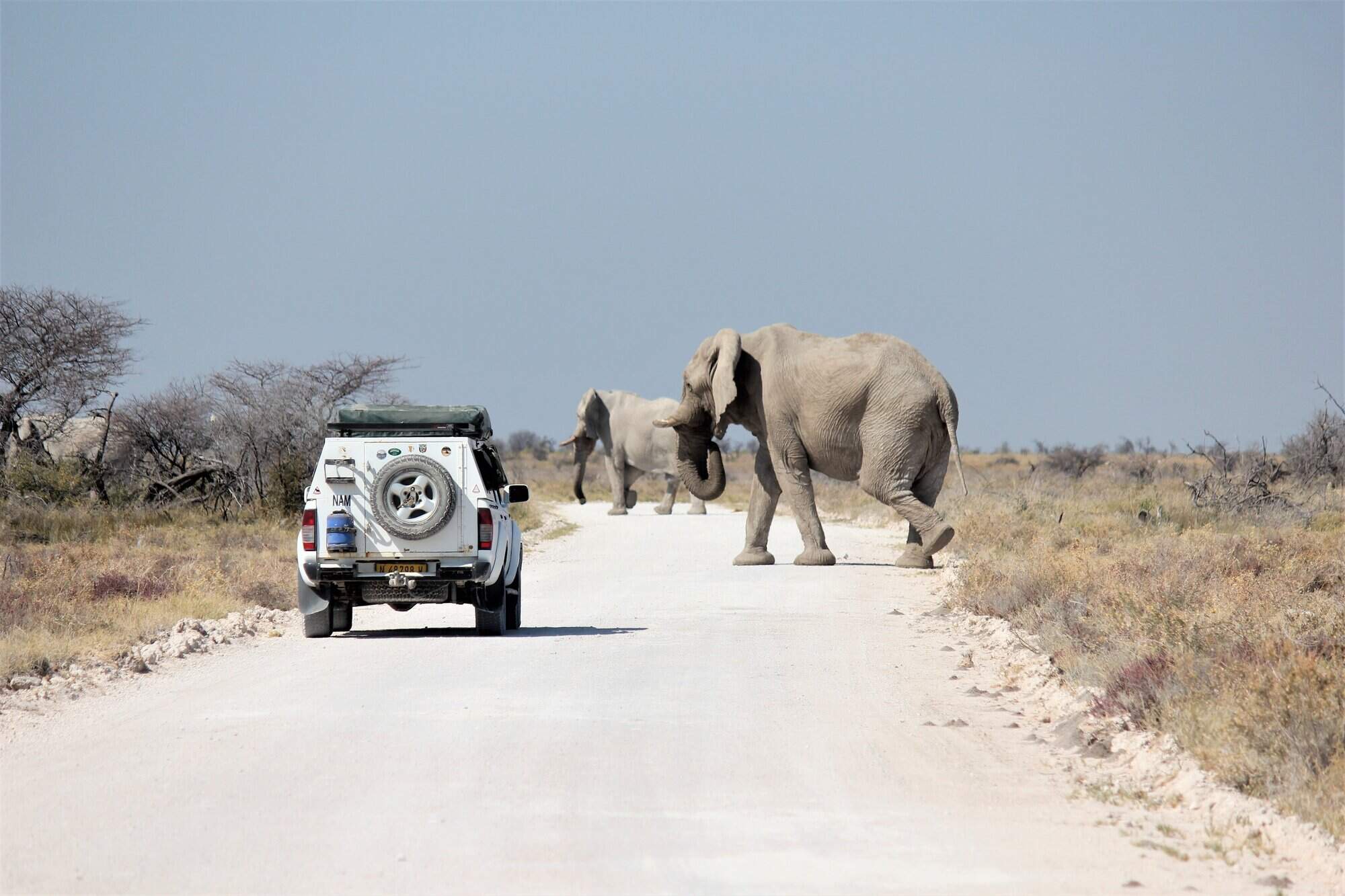
Okaukuejo Camp
Set within Etosha National Park, Okaukuejo Resort is a large camp with a productive, floodlit waterhole.
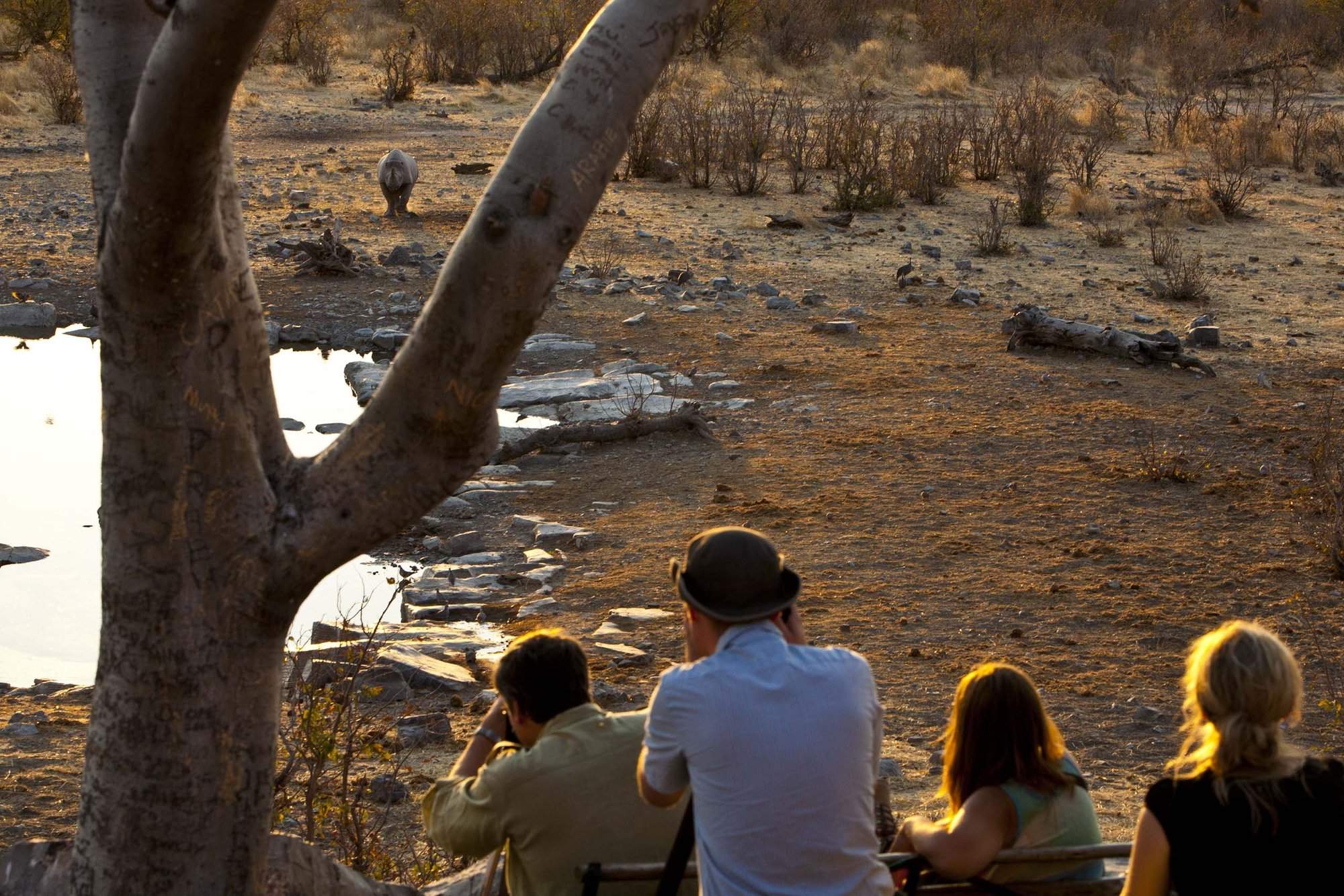
Halali Camp
The smallest of Etosha's erstwhile restcamps, overlooking its own floodlit waterhole, Halali has a superb location near the centre of Etosha Pan.
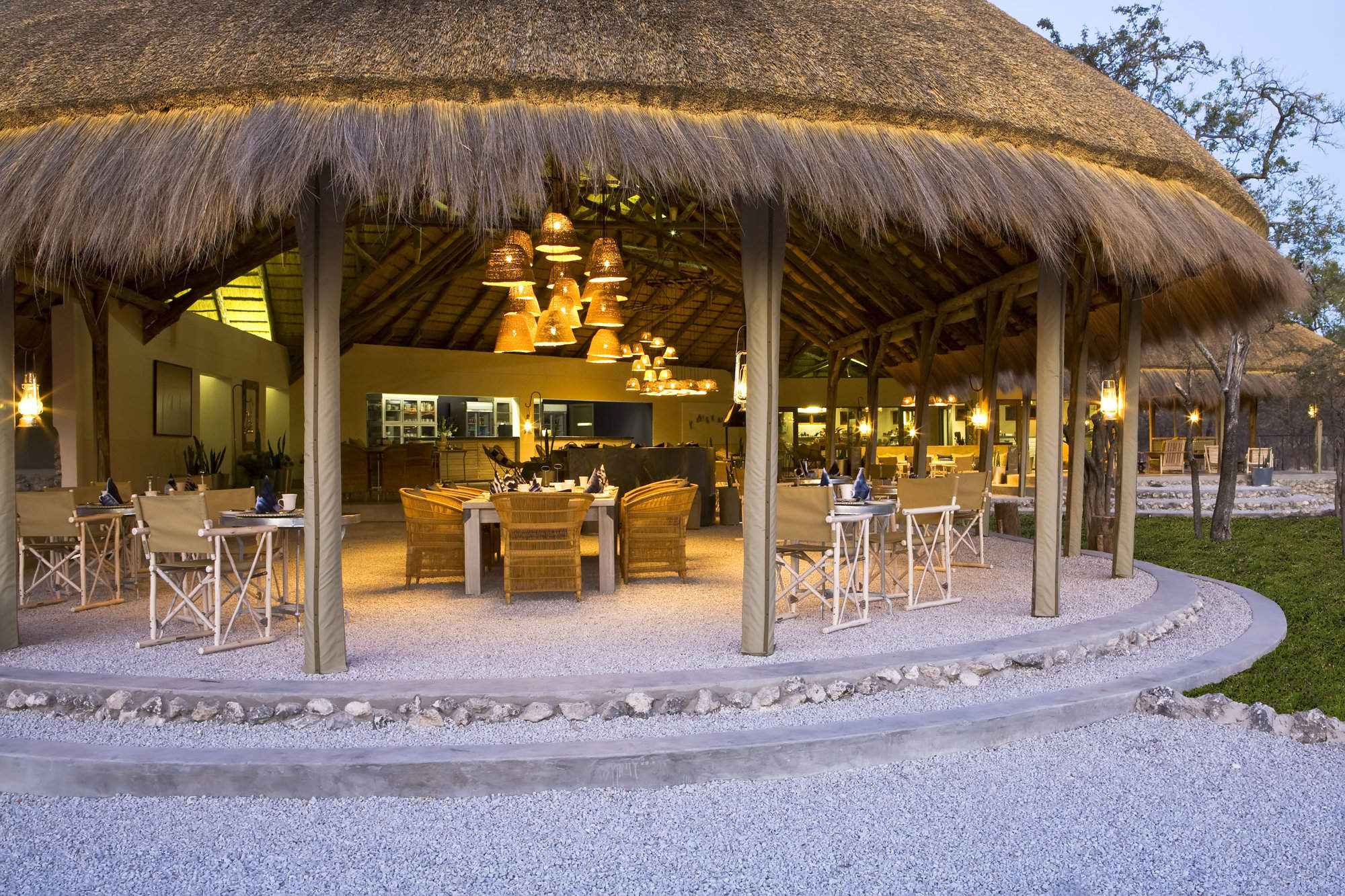
Mushara Bush Camp
The family-friendly Mushara Bush Camp offers great value and is an excellent base from which to explore Etosha National Park.
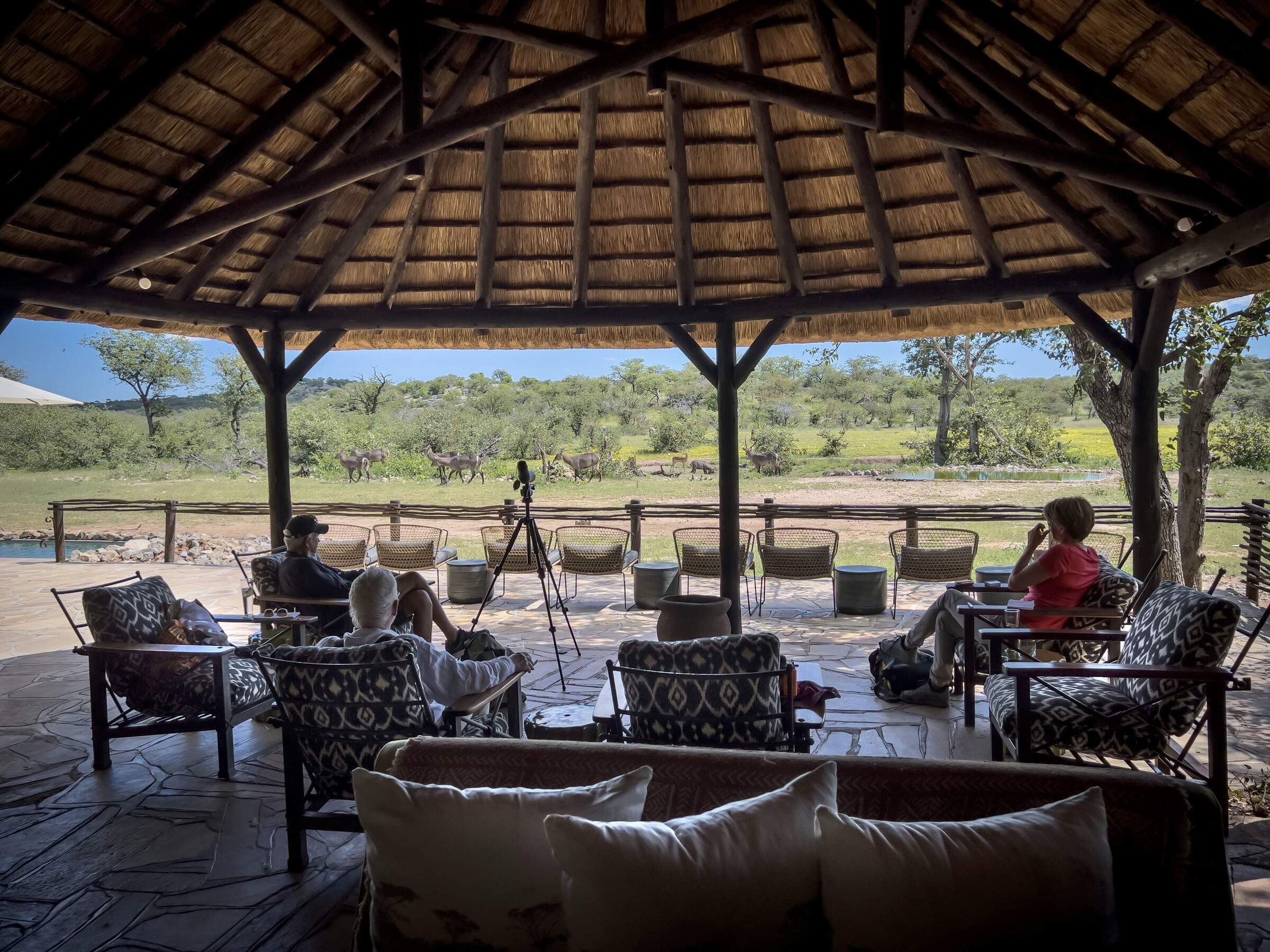
Ongava Tented Camp
Set around a waterhole on a private reserve, the small Ongava Tented Camp combines understated comfort with activities that include walks and night drives.
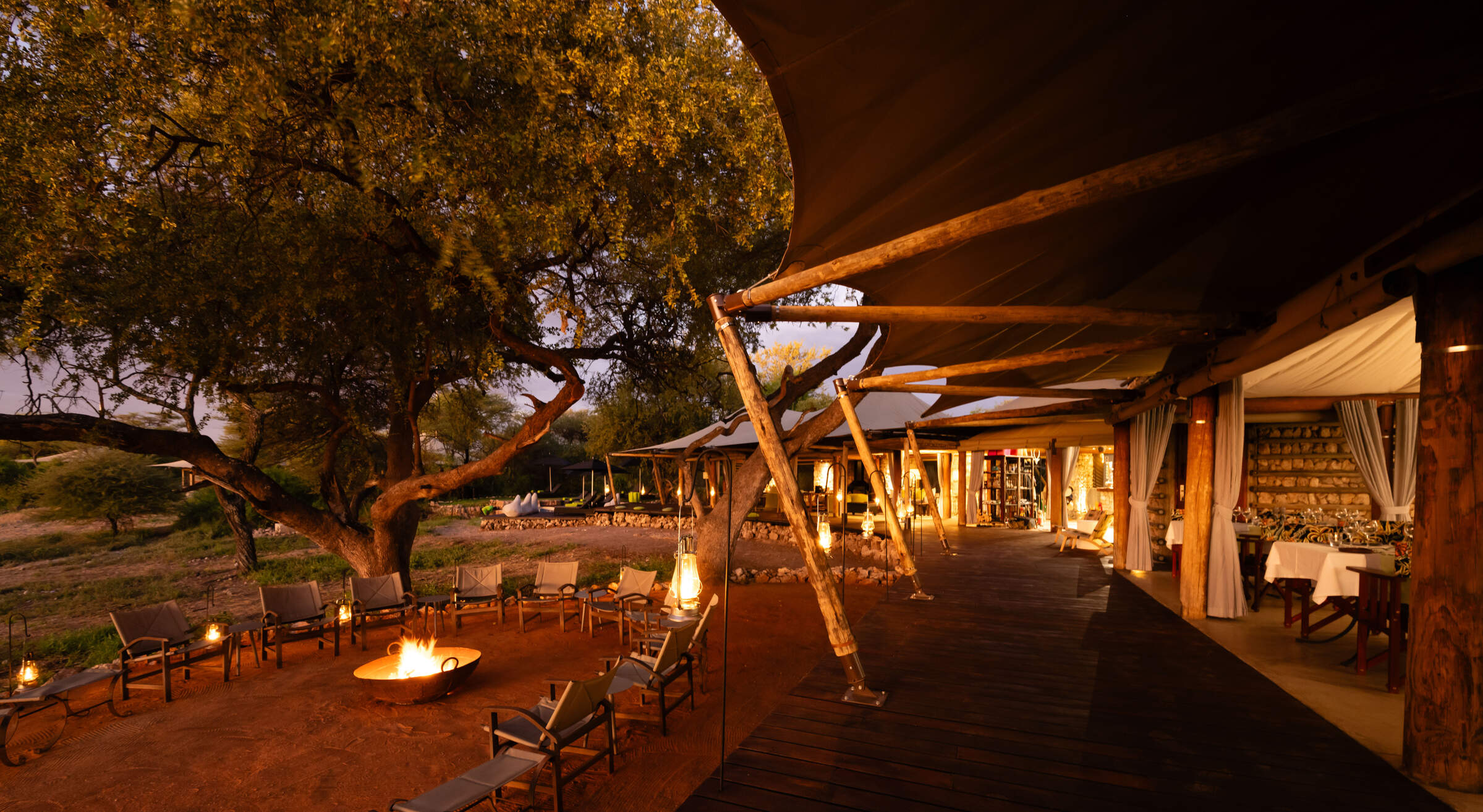
Onguma Tented Camp
Onguma Tented Camp is a lovely, little tented camp which centres around an attractive waterhole a short drive from the Von Lindequist Gate to eastern Etosha.
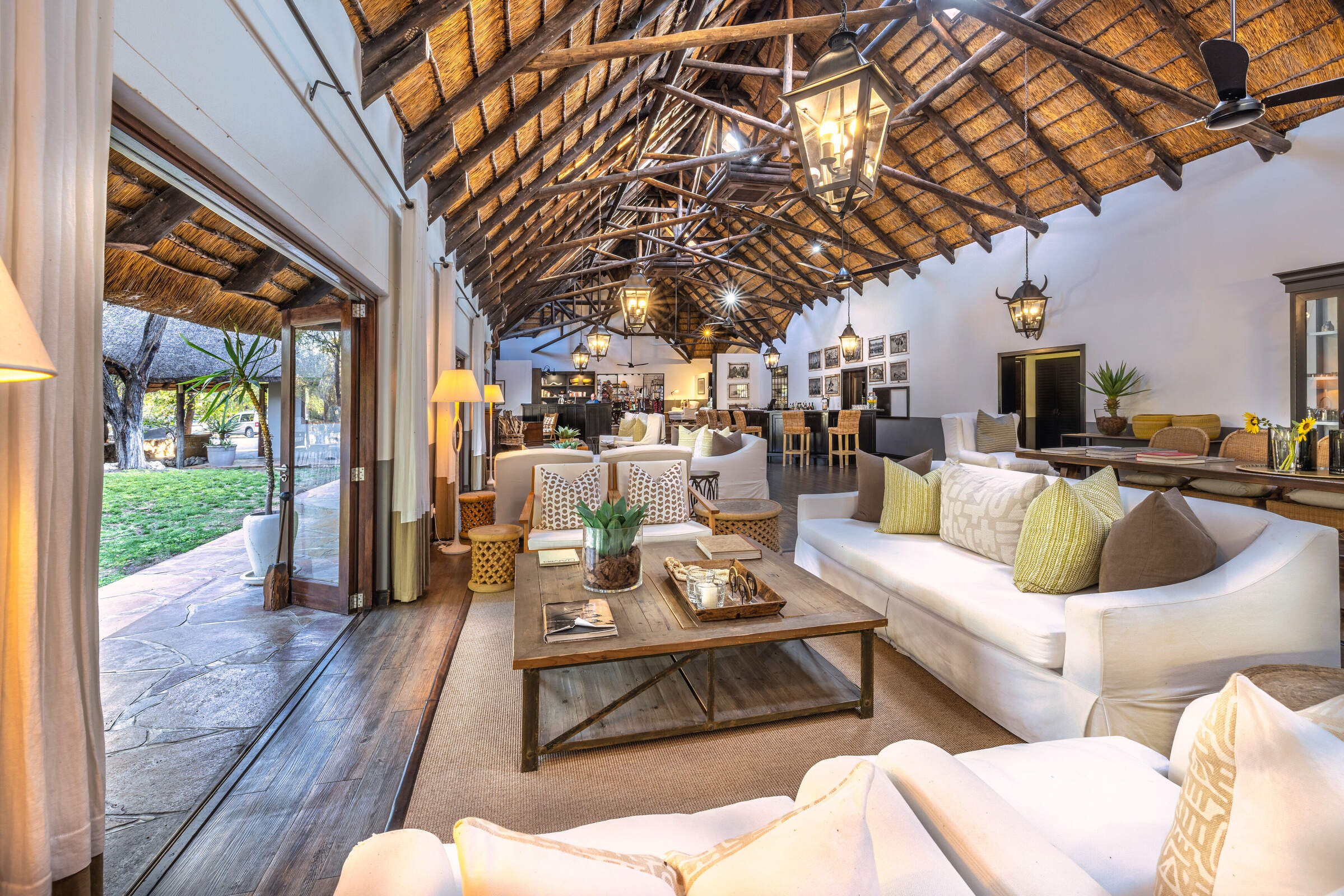
Mushara Lodge
Close to the eastern entrance to Etosha, the comfortable Mushara Lodge is well-placed for exploring the park in your own vehicle or on a guided drive.
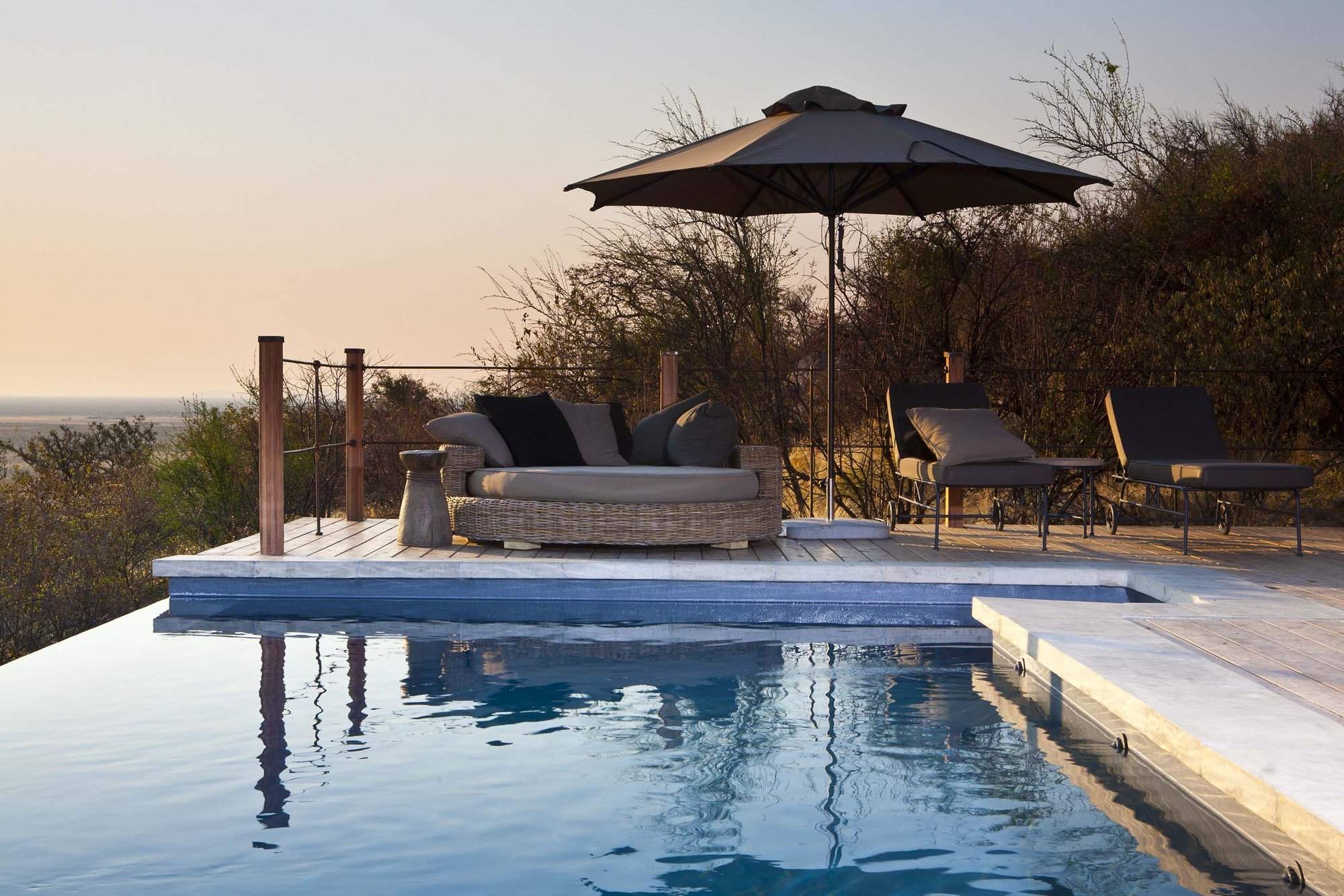
Dolomite Camp
Opened in 2011, Dolomite Camp allows visitors access to the far west side of Etosha National Park, which was previously off limits to most visitors.

Onguma Bush Camp
For great wildlife viewing without breaking the bank, the affordable and understated luxury of Onguma Bush Camp could be perfect.
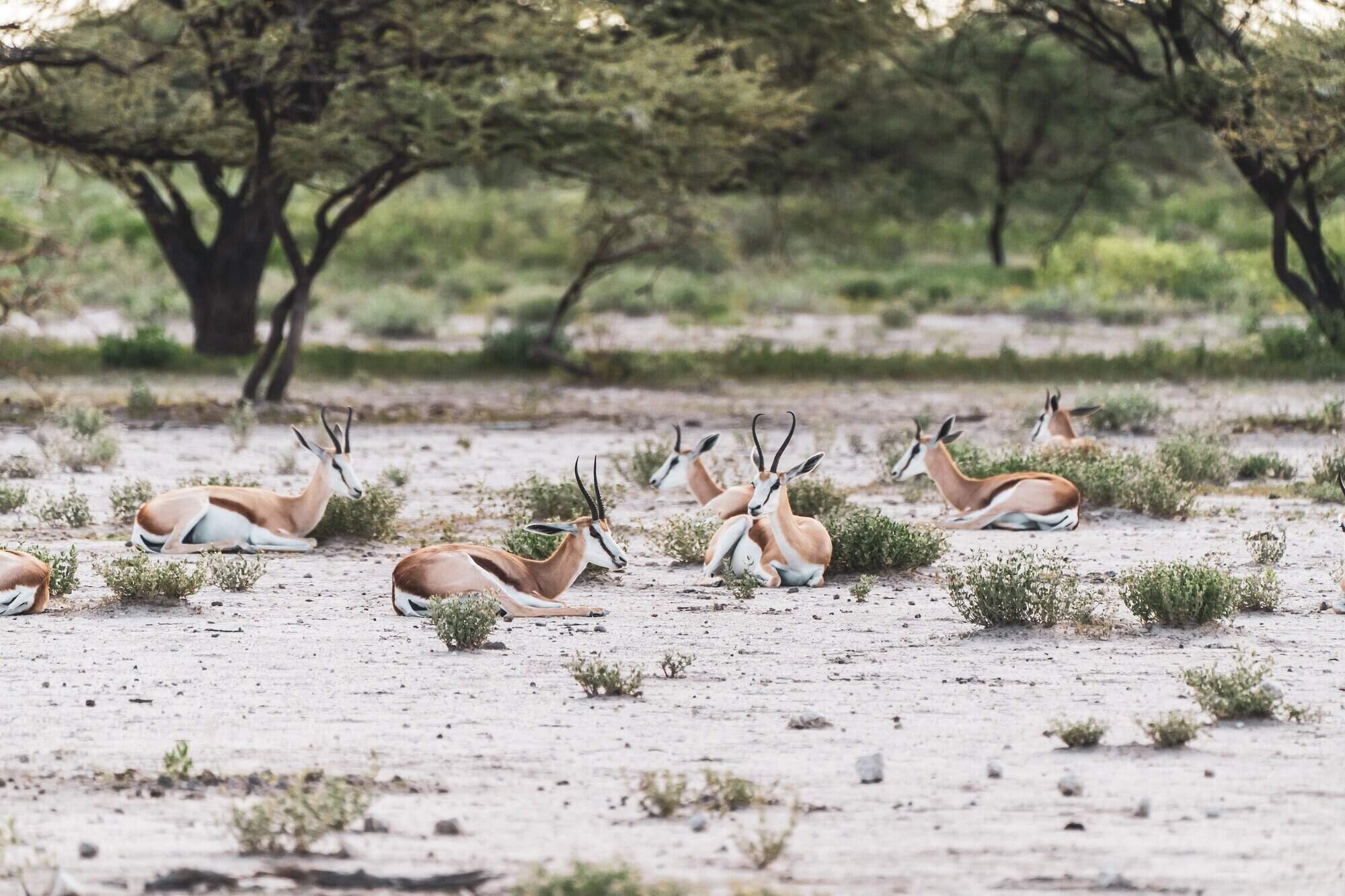
Namutoni Camp
Centred on an old fort, the government run Namutoni Camp is located just inside Etosha National Park, close to Fisher's Pan.
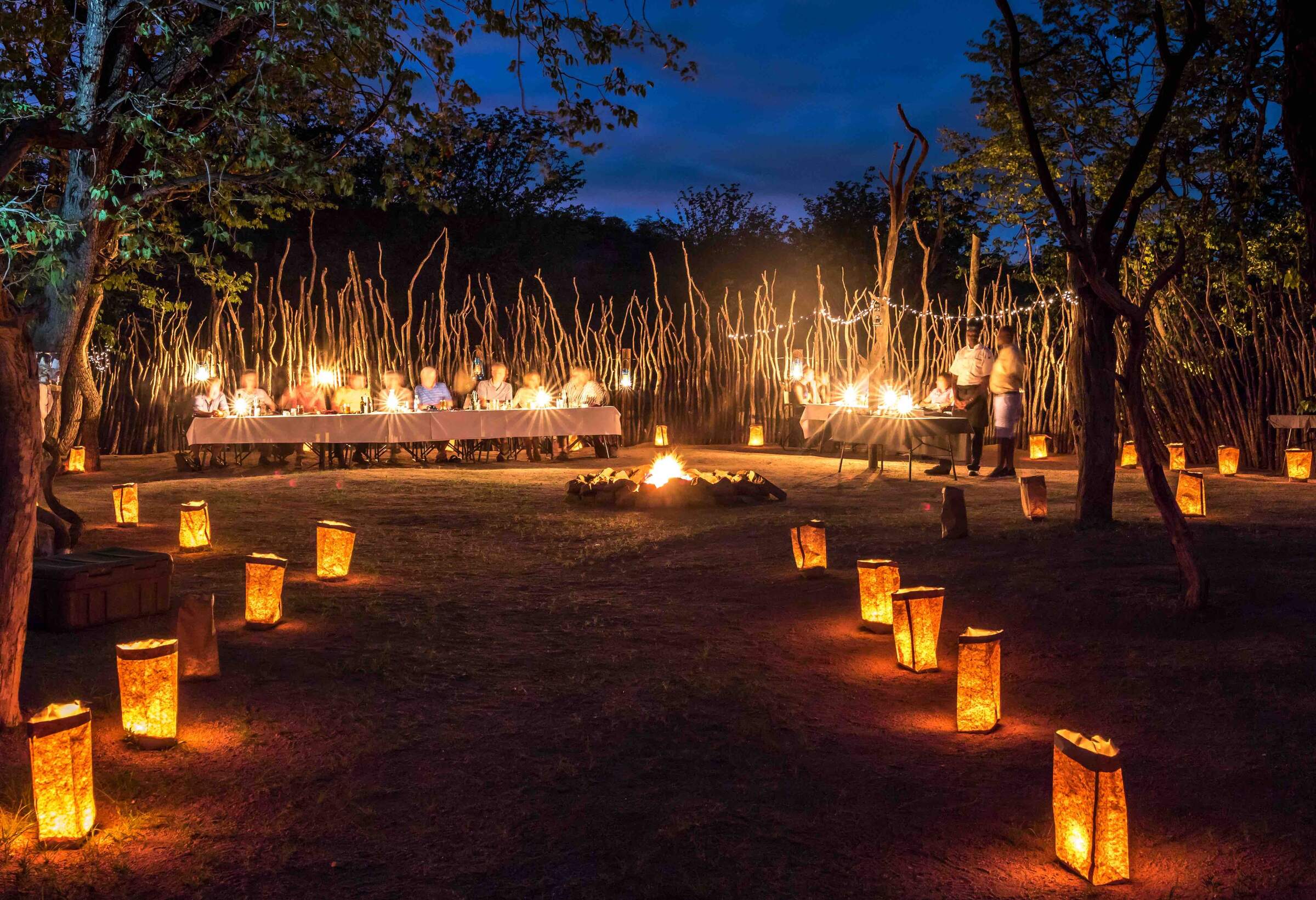
Hobatere Lodge
To the west of Etosha National Park, on the edge of Damaraland, Hobatere Lodge offers good game-viewing on its own reserve.
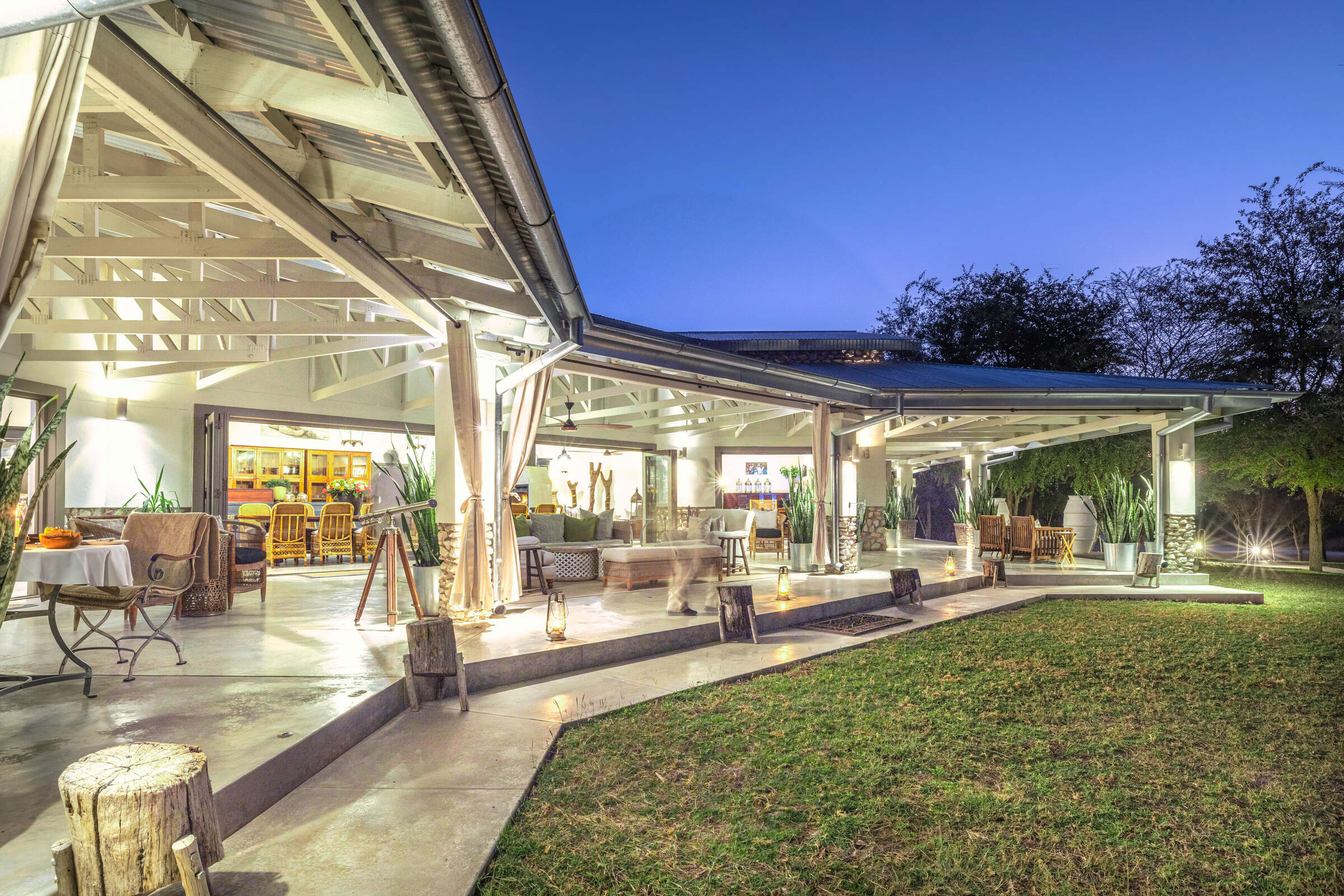
Mushara Outpost
Intimate and luxurious, Mushara Outpost is well-placed on a private reserve to explore nearby Etosha National Park on your own or on a guided drive.
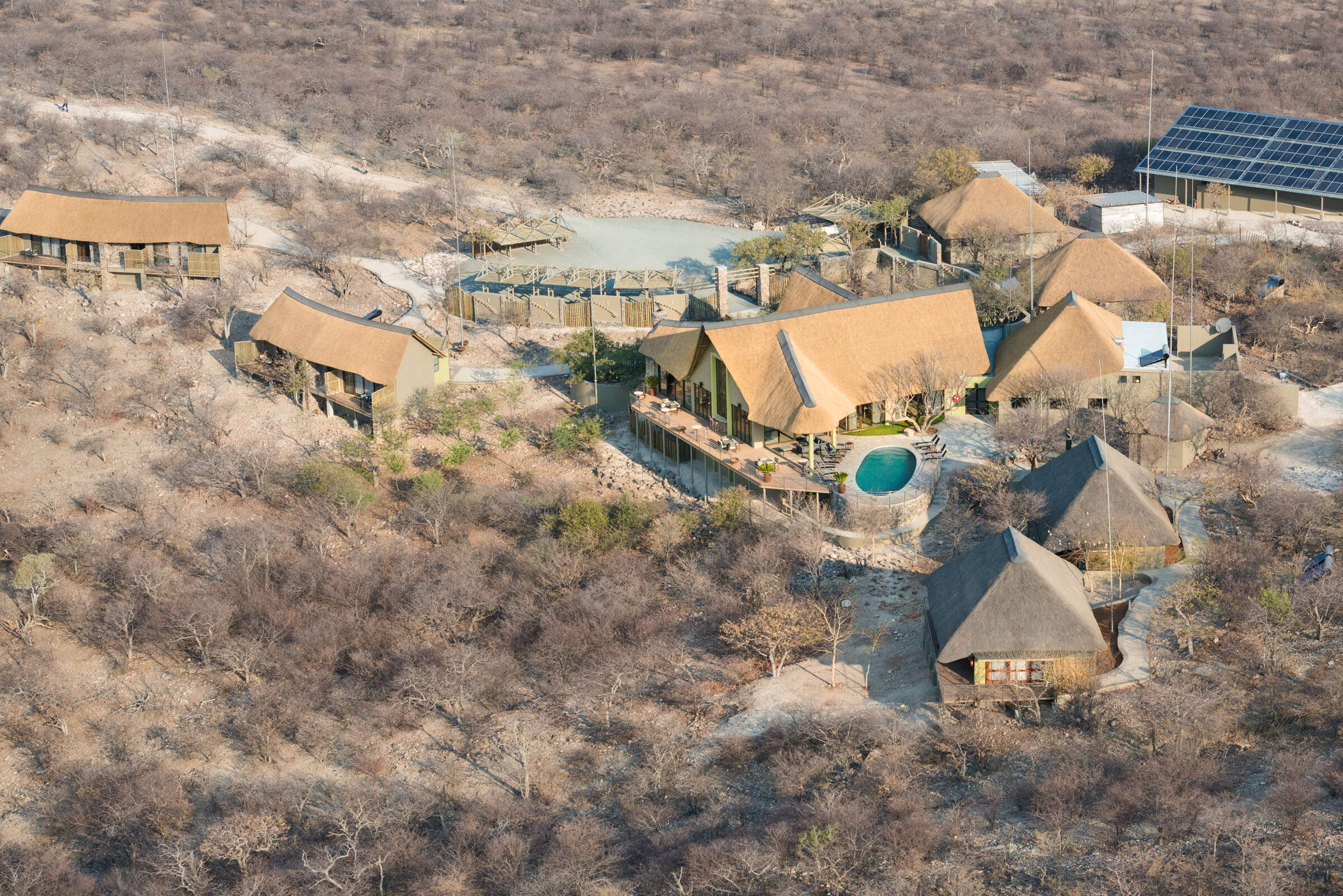
Safarihoek Lodge
At the heart of the private Etosha Heights Reserve, Safarihoek Lodge offers comfortable accommodation and excellent game-viewing.
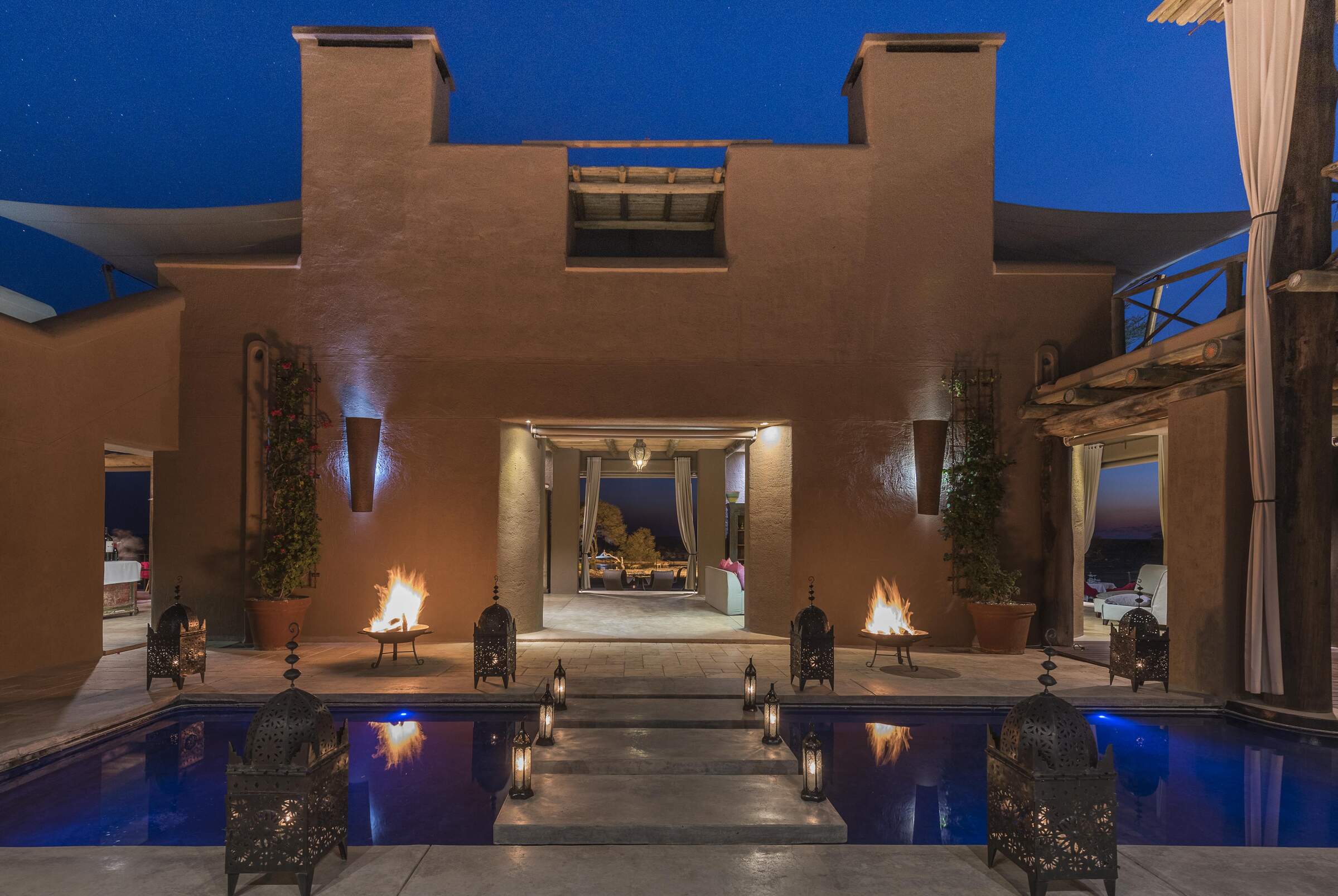
Onguma The Fort
The Fort is the jewel in the crown of the Onguma lodges, and arguably the whole of eastern Etosha.
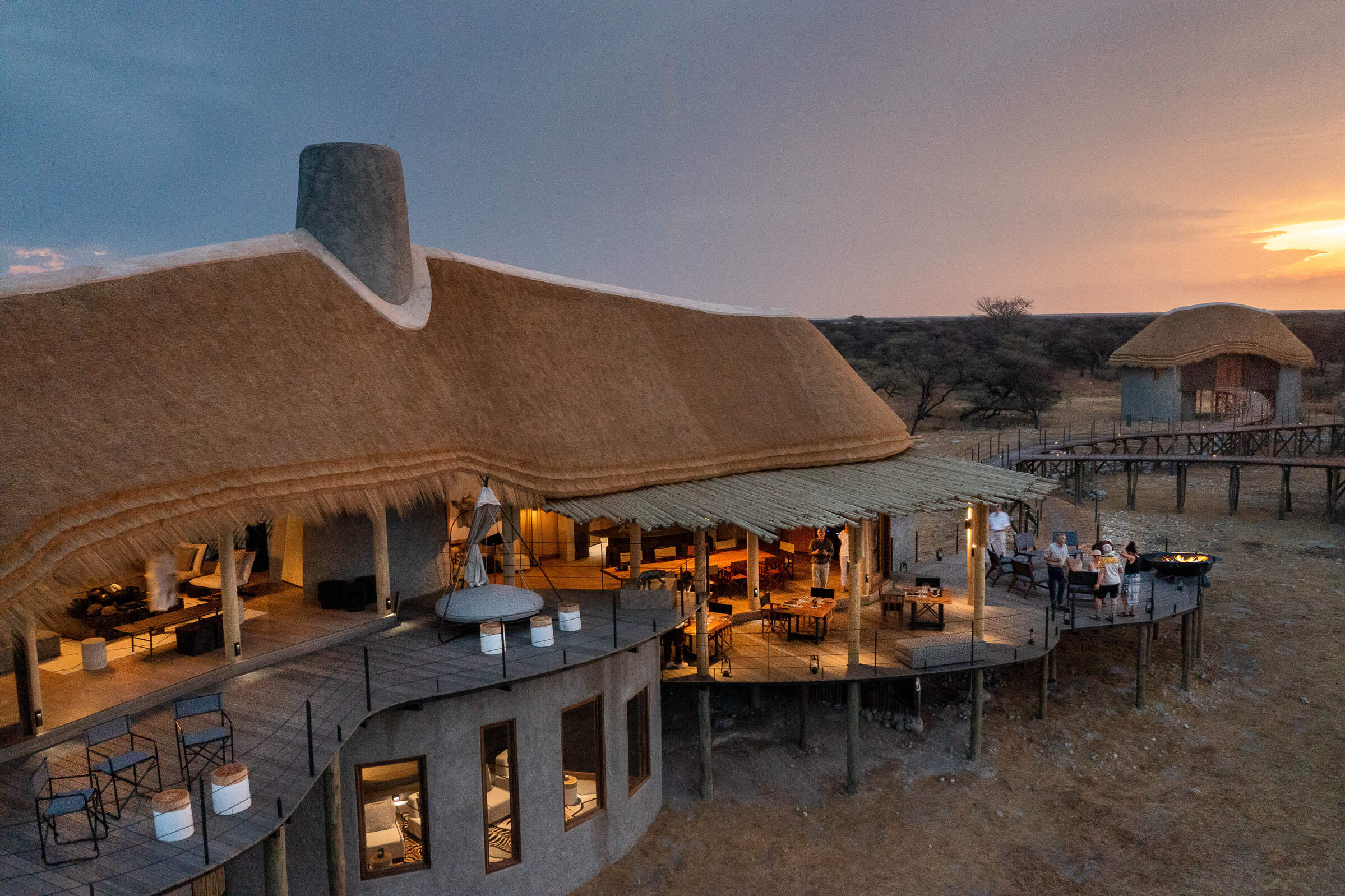
Onguma Camp Kala
For a bird’s eye view across African bush, the stilted rooms at Onguma Camp Kala are truly special.
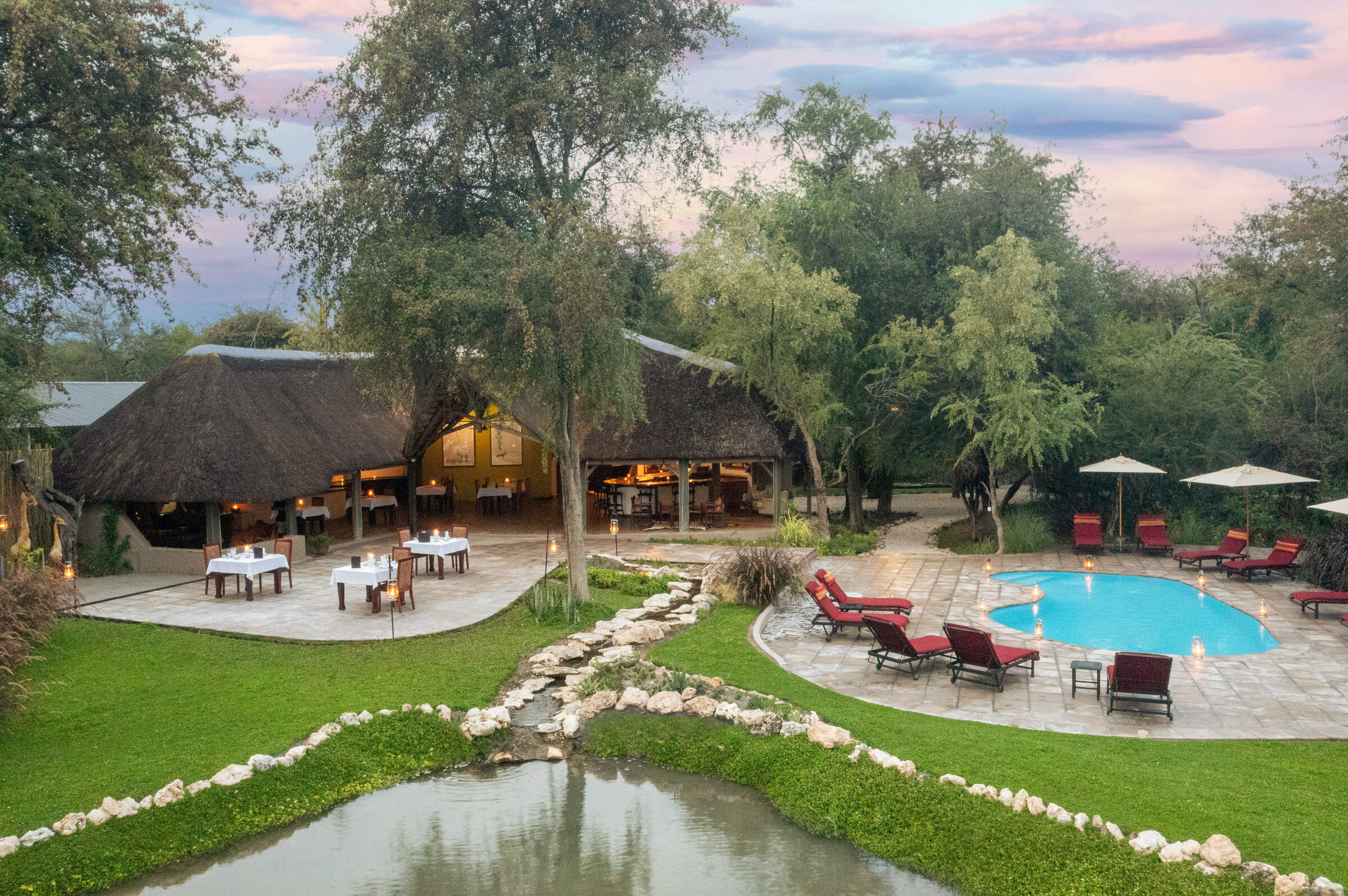
Onguma Forest Camp
From its woodland setting on the Onguma Reserve, Forest Camp is within easy striking distance of Namibia’s flagship national park.
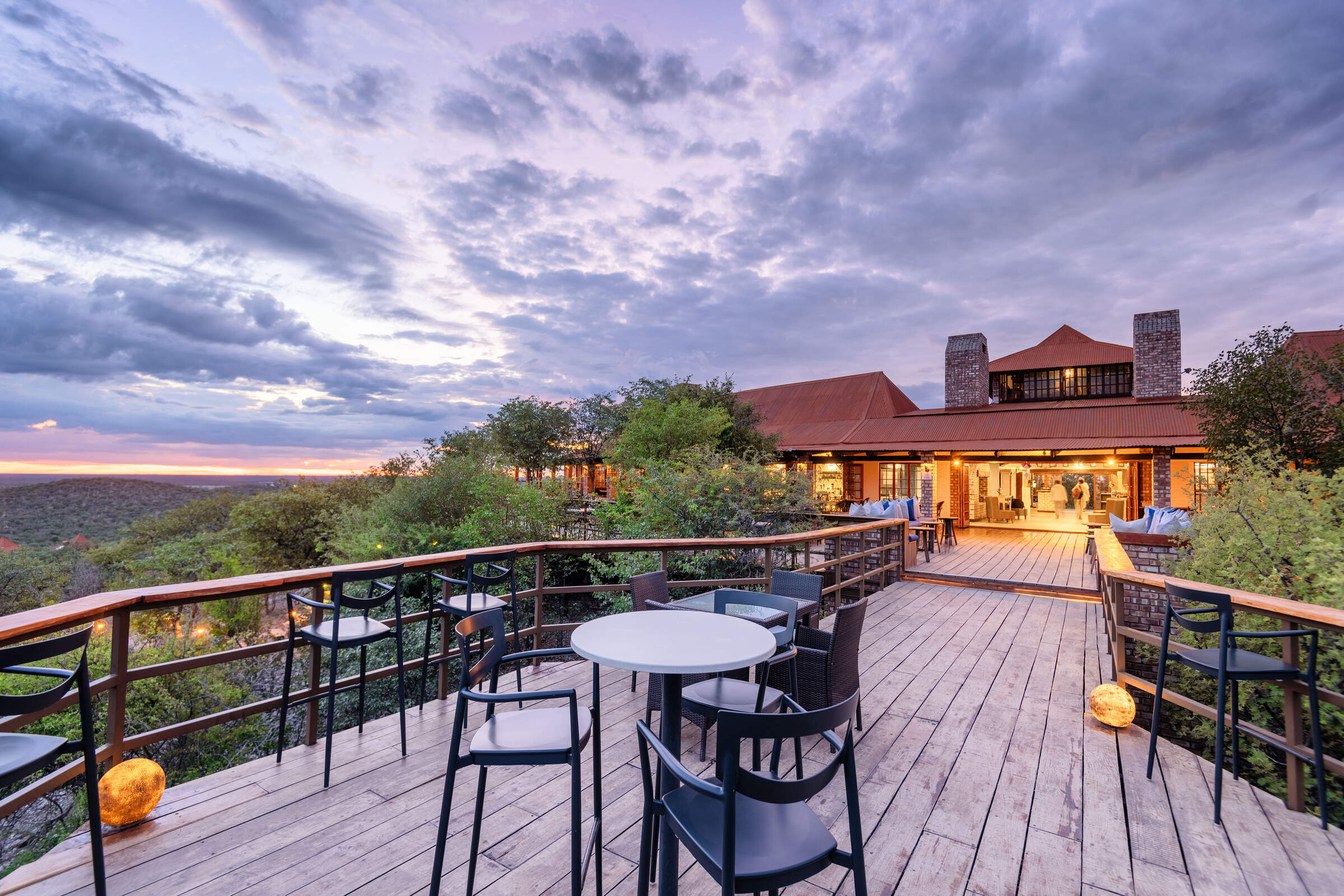
Etosha Safari Lodge
A short drive from Etosha National Park's southern entrance, Etosha Safari Lodge is a convenient base from which to explore the park.
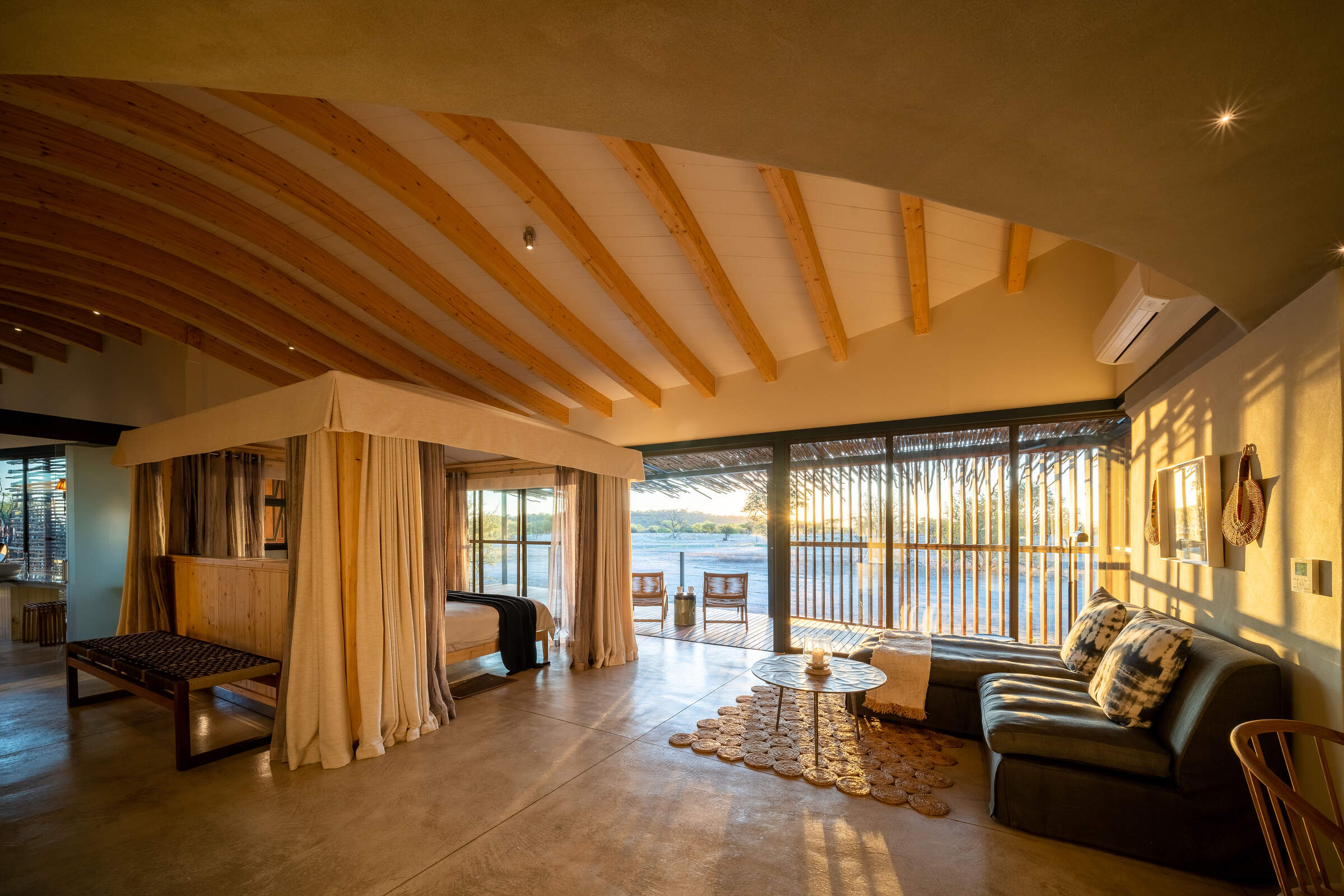
Andersson's at Ongava
With game drives on both its private reserve and in Etosha, Andersson's at Ongava also offers access to the Ongava Research Centre.
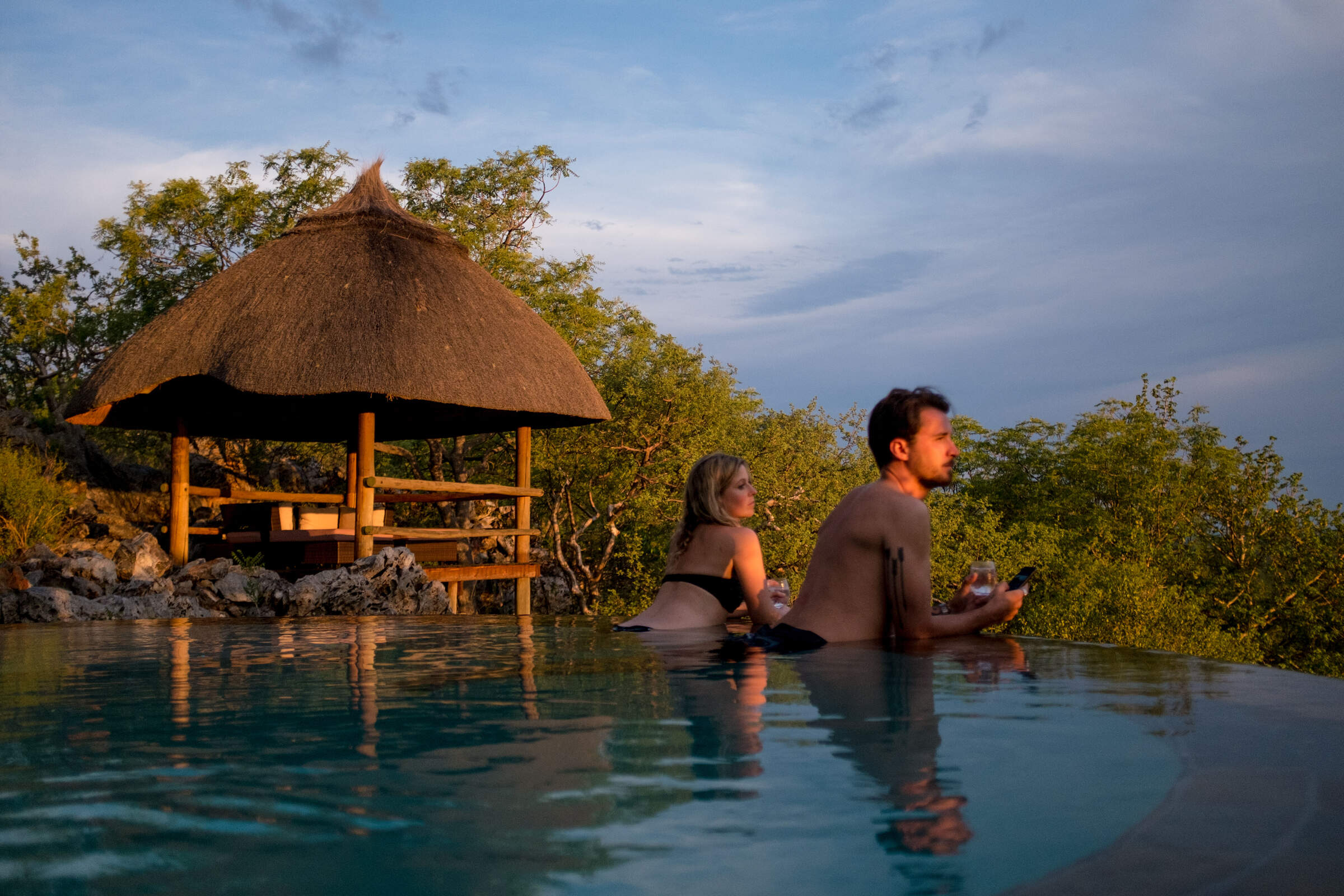
Little Ongava
The beautifully located and luxurious Little Ongava is a stunning place to stay in order to explore Etosha National Park and the private Ongava Reserve.
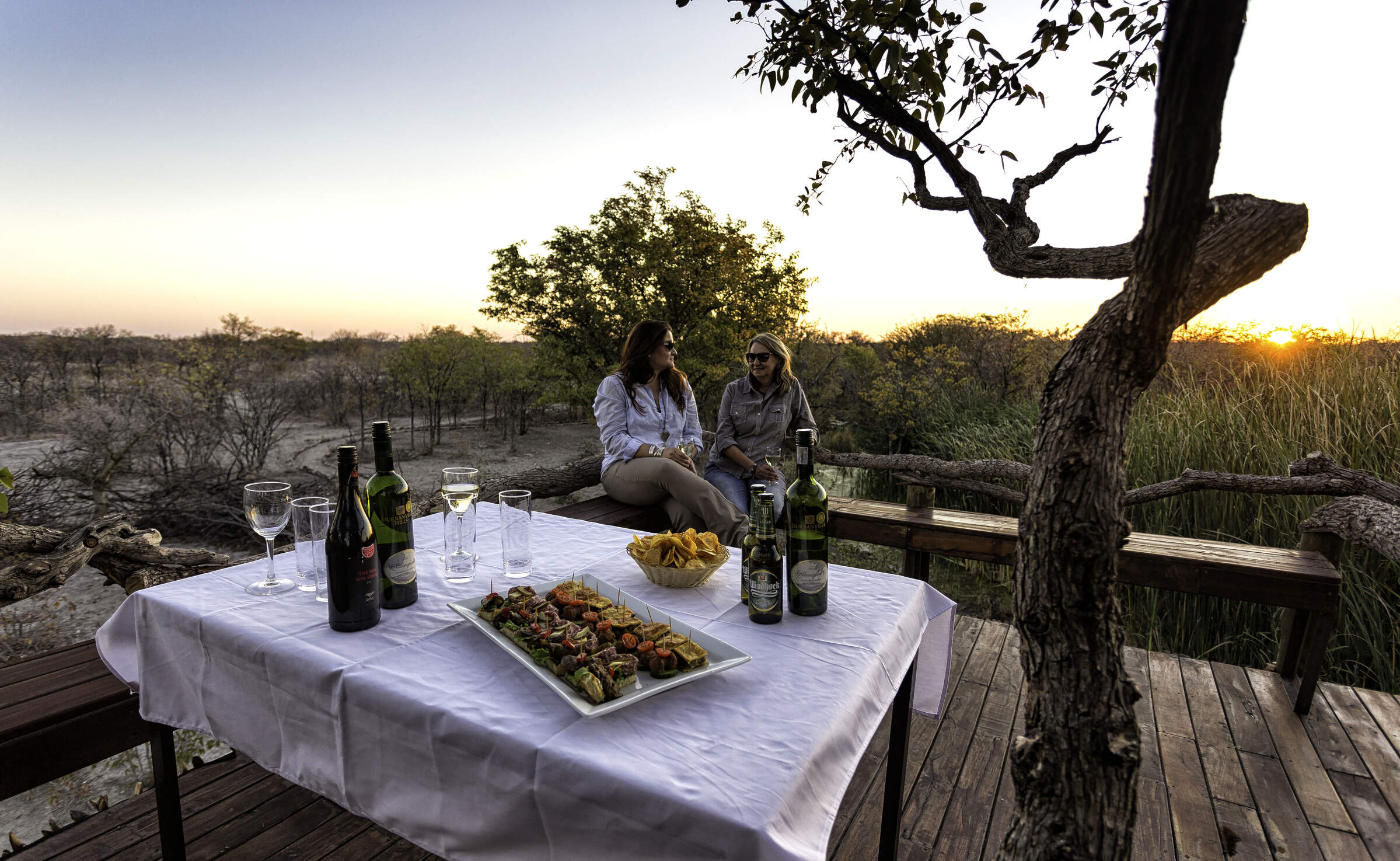
Taleni Etosha Village
Only 4km from Etosha's southern entrance, Taleni Etosha Village is an affordable base from which to explore the park.
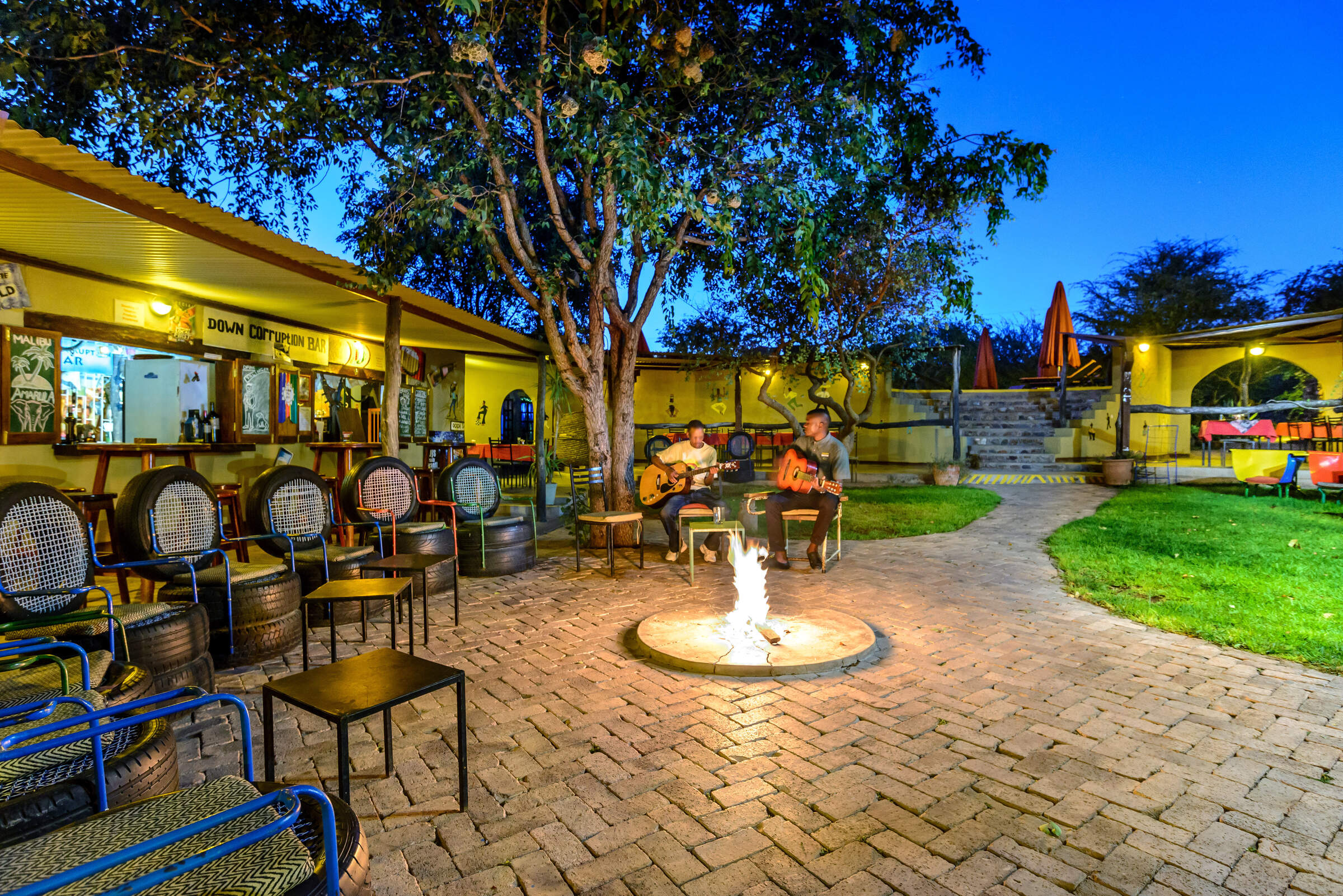
Etosha Safari Camp
Funky, low-key and very original, Etosha Safari Camp is well placed for visiting Etosha National Park on a self-drive or guided safari.
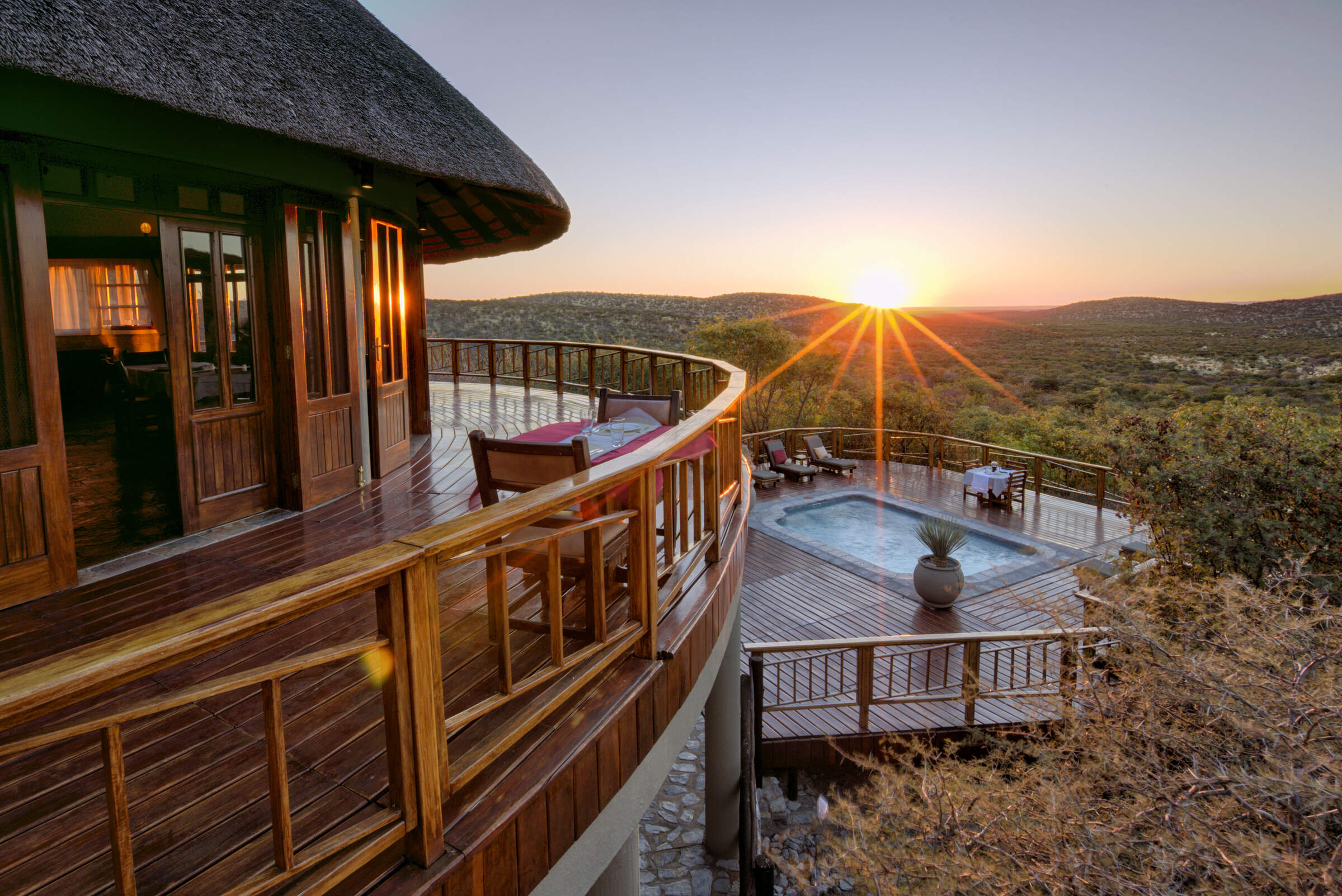
Mountain Lodge
In the heart of the private Etosha Heights Reserve, the family-friendly Mountain Lodge offers game drives and bush walks within an exclusive environment.
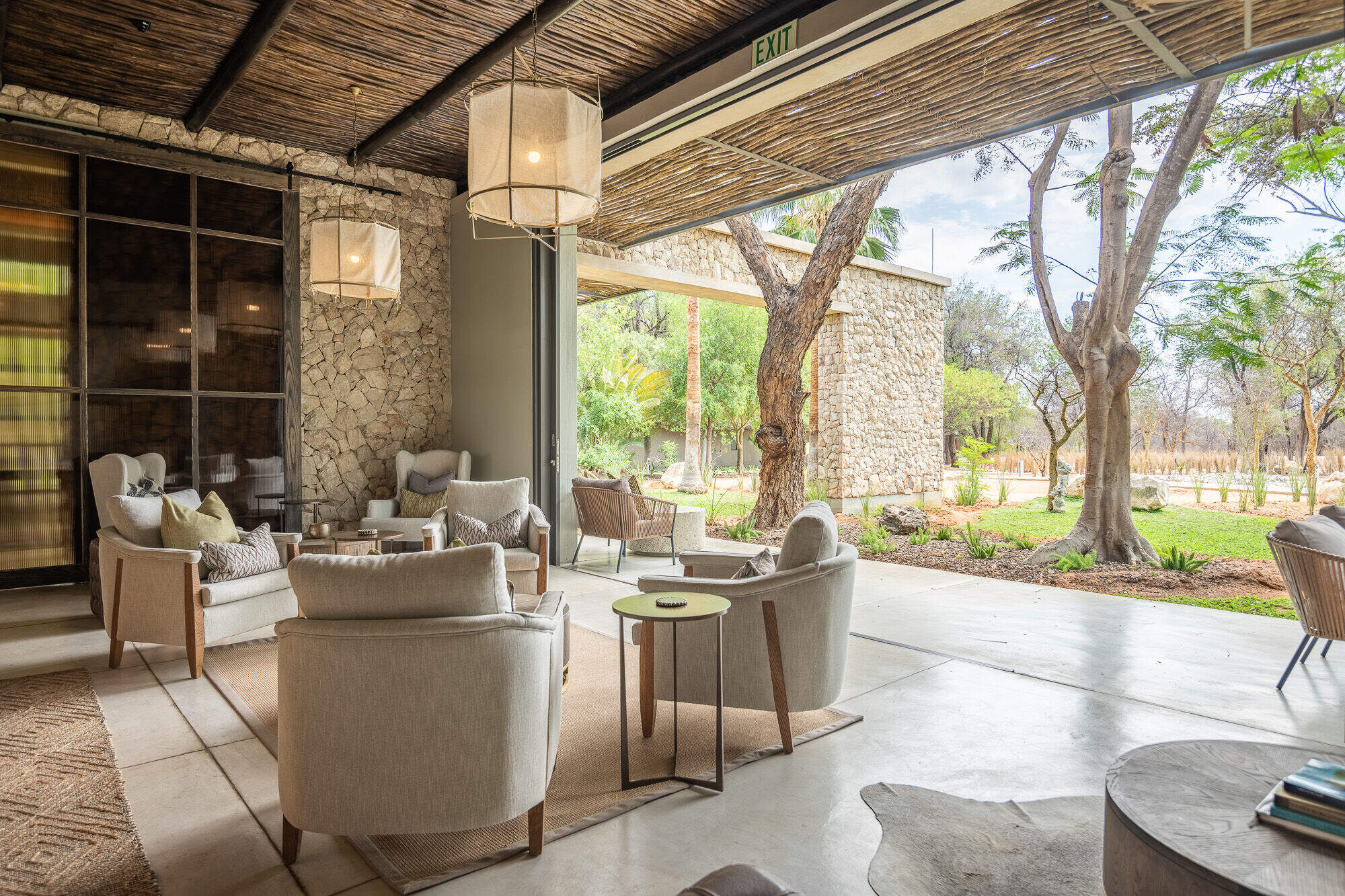
Mokuti Etosha Lodge
With 106 rooms, child-friendly Mokuti Etosha Lodge is more like a hotel than a lodge. Facilities to include a gym, spa, tennis courts and even a snake park.
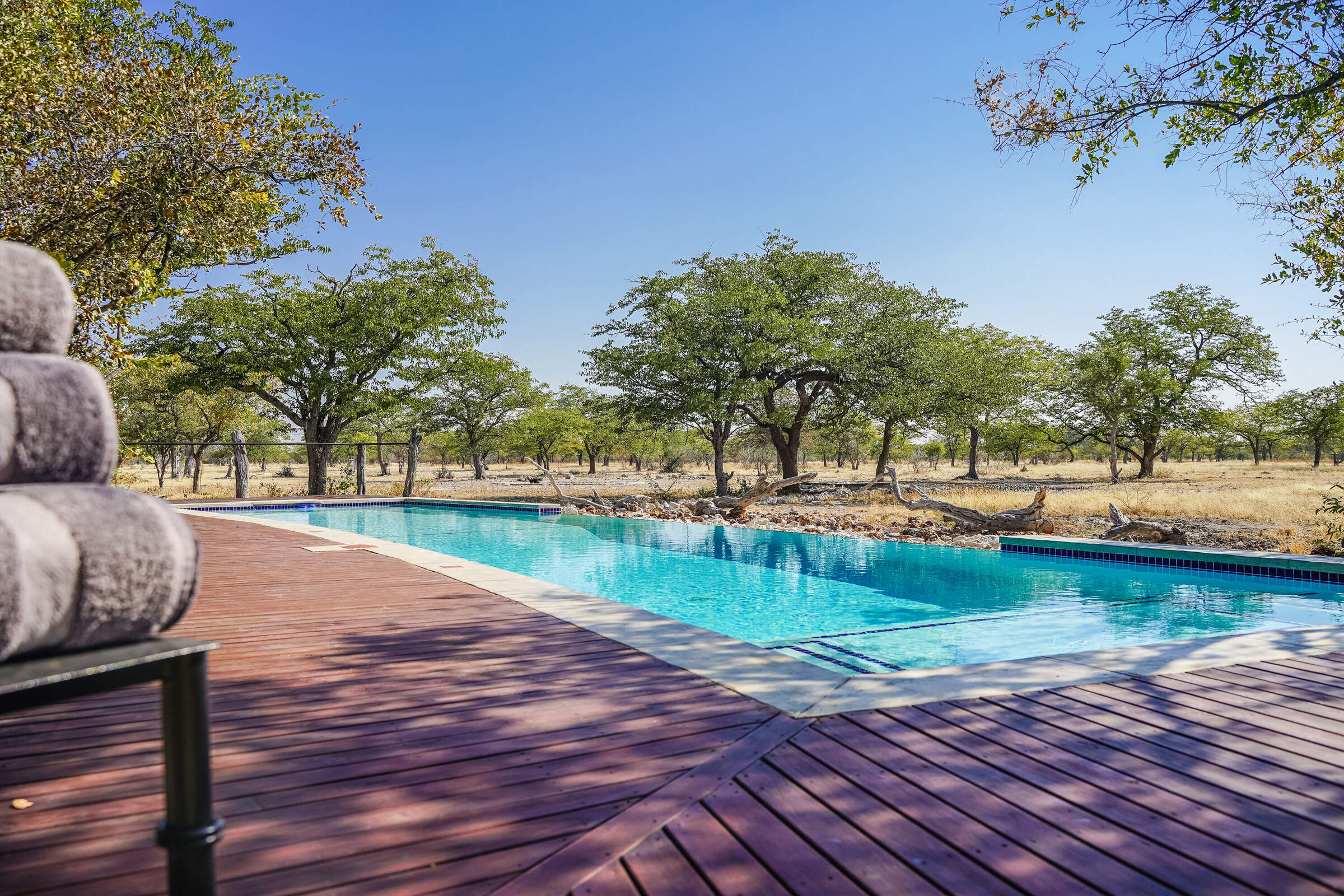
Etosha Oberland Lodge
A short drive from Etosha National Park's southern entrance, Etosha Oberland Lodge is a very comfortable base from which to explore the park, with excellent food.
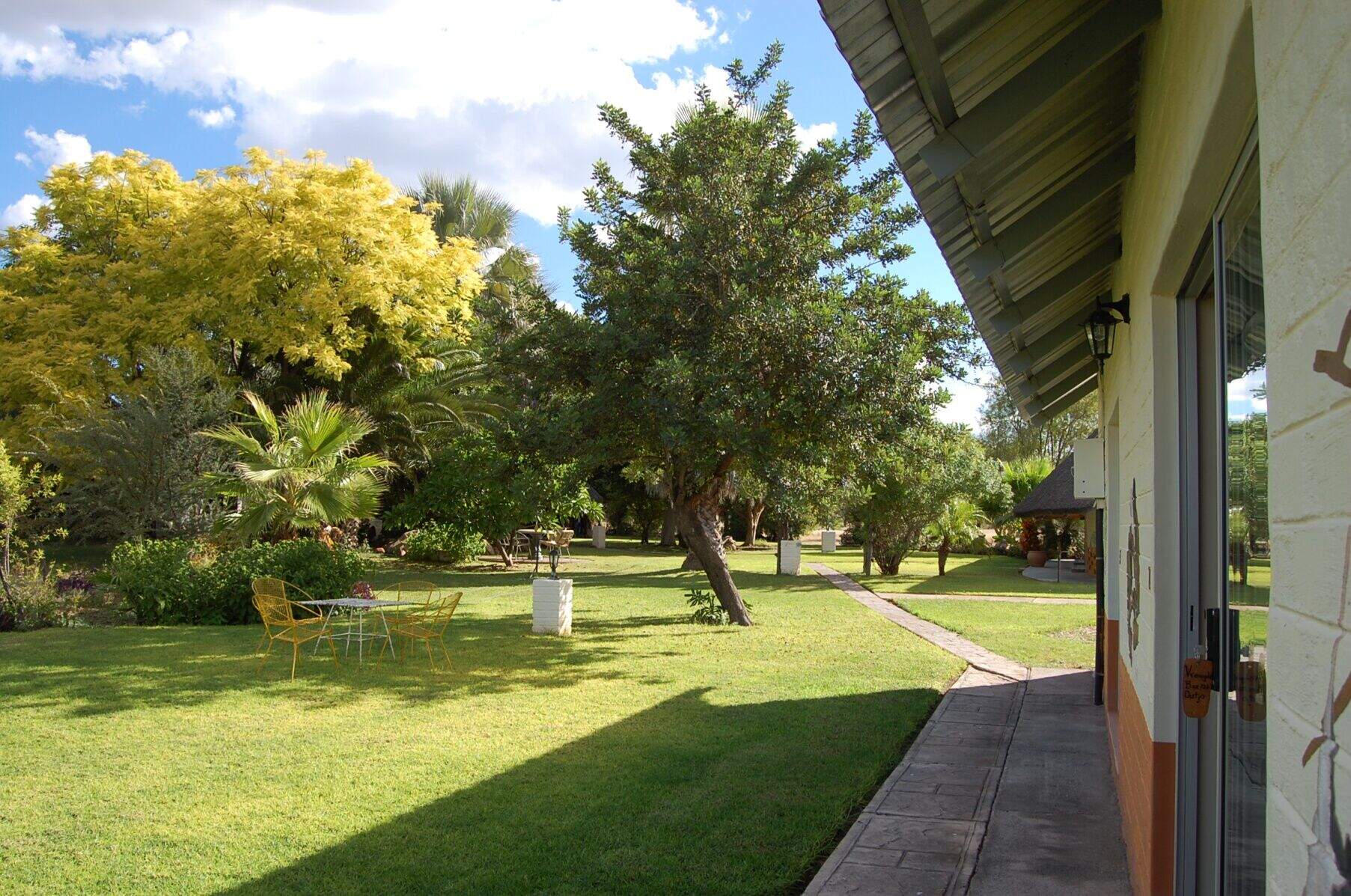
Vreugde Guest Farm
Vreugde Guest Farm is a delightful owner-run and working sheep farm where you can expect a warm welcome and charming hospitality.
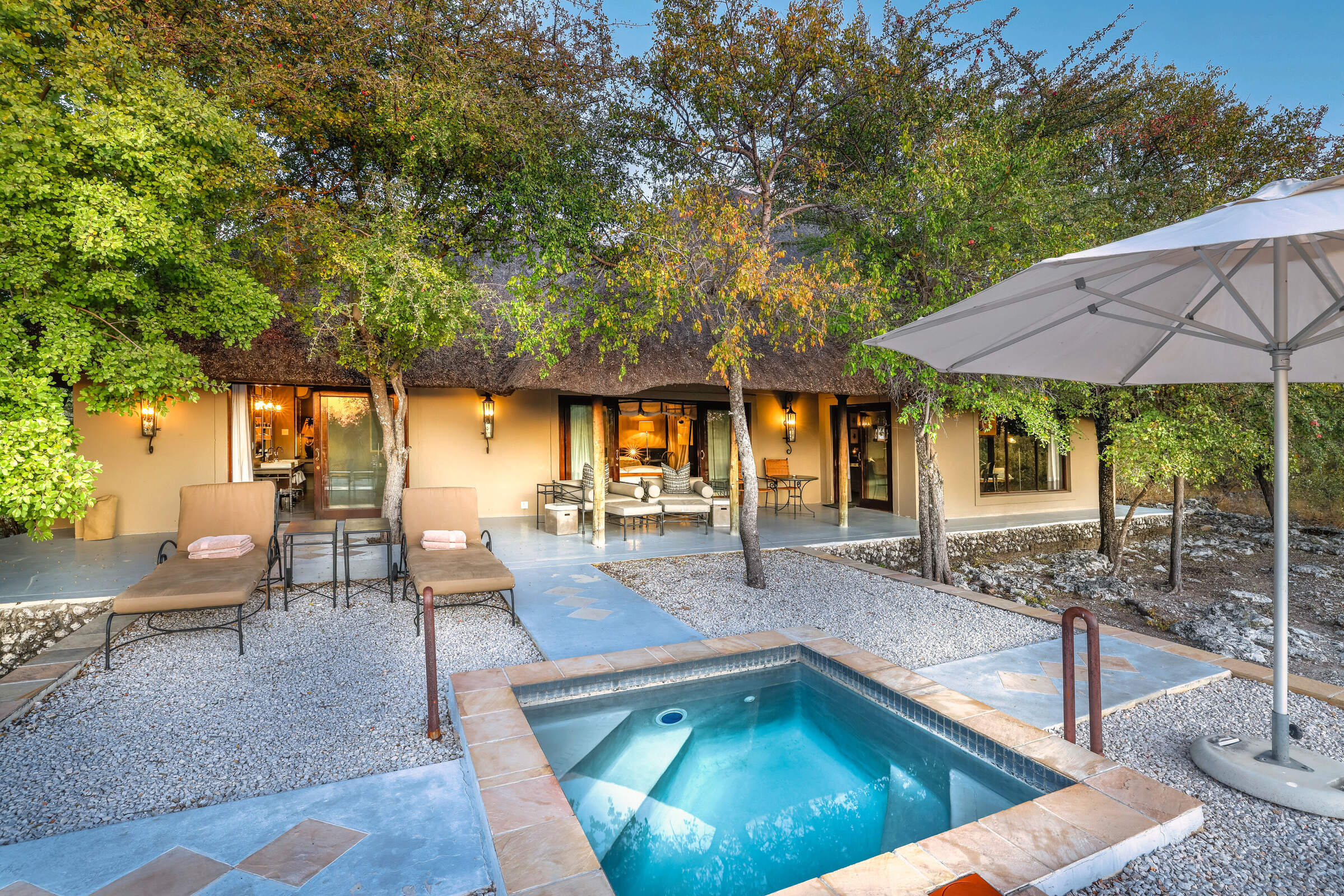
Villa Mushara
Offering luxury on a peaceful private reserve close to Etosha, Villa Mushara is a great choice for honeymooners & those wishing to indulge themselves.
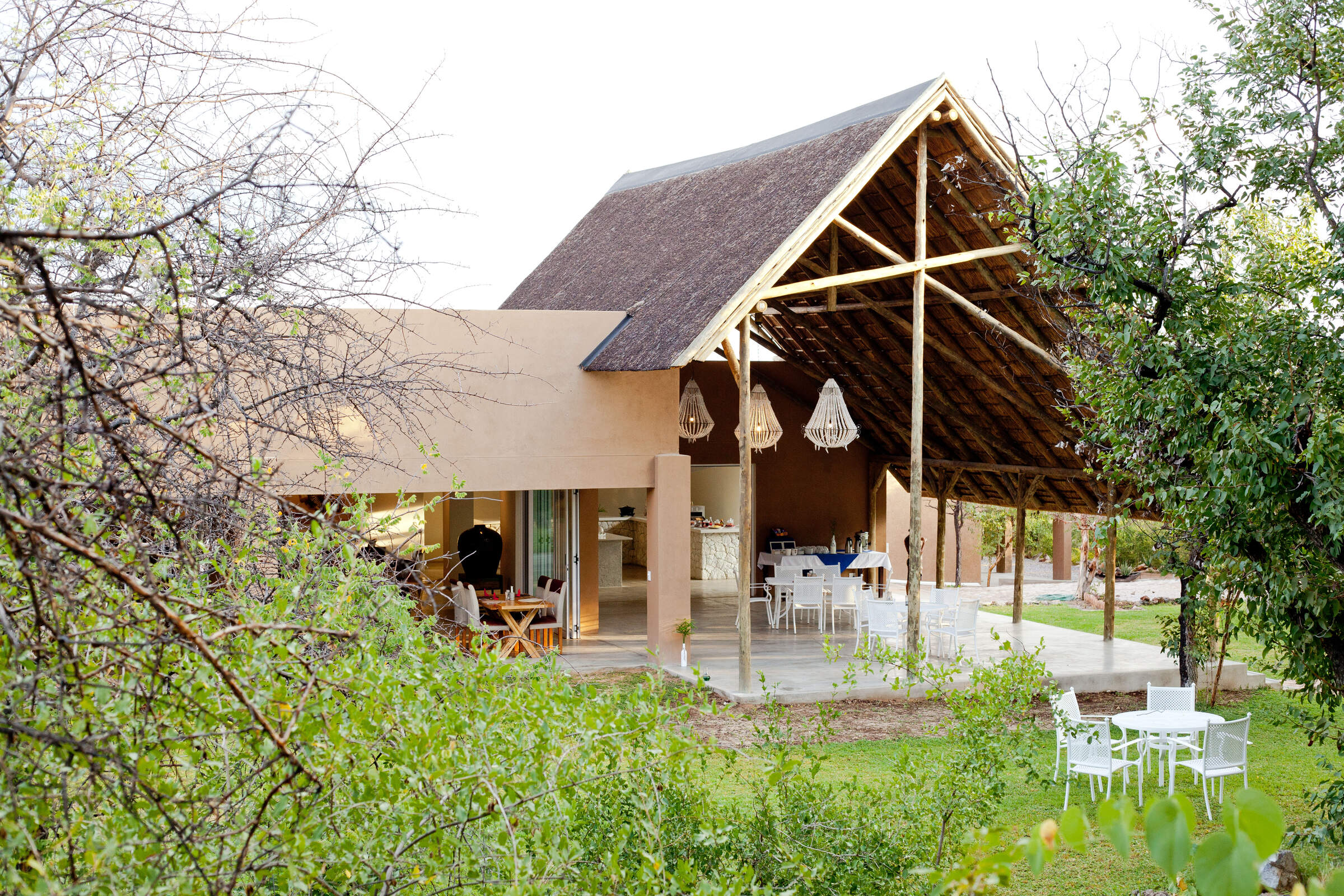
Toshari Lodge
Smart and professionally run, the hotel-style Toshari Lodge is well-placed for self-driving in Etosha National Park.
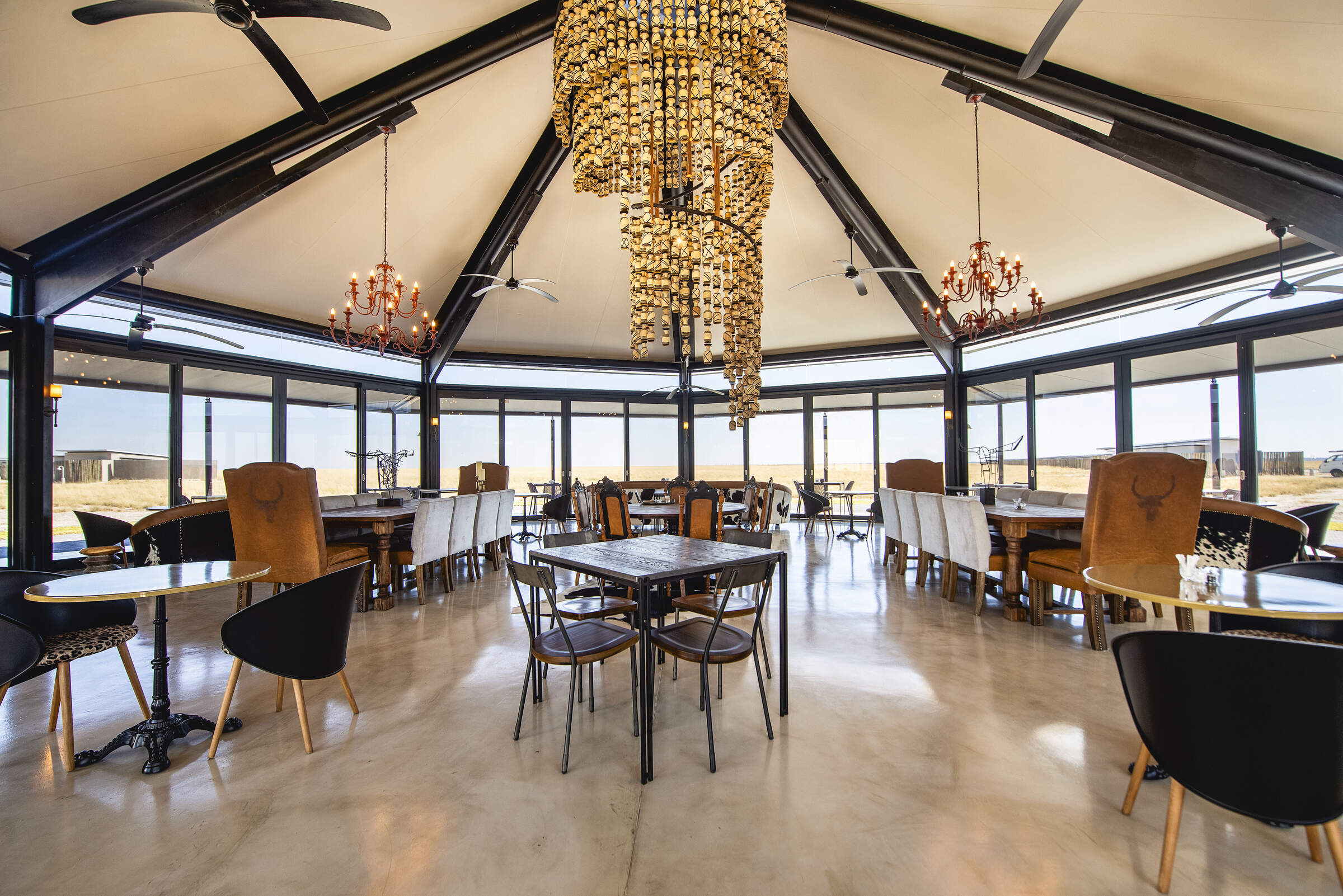
Etosha King Nehale
A short drive from the national park's northern entrance, Etosha King Nehale Lodge is an interesting and comfortable base from which to explore the park.
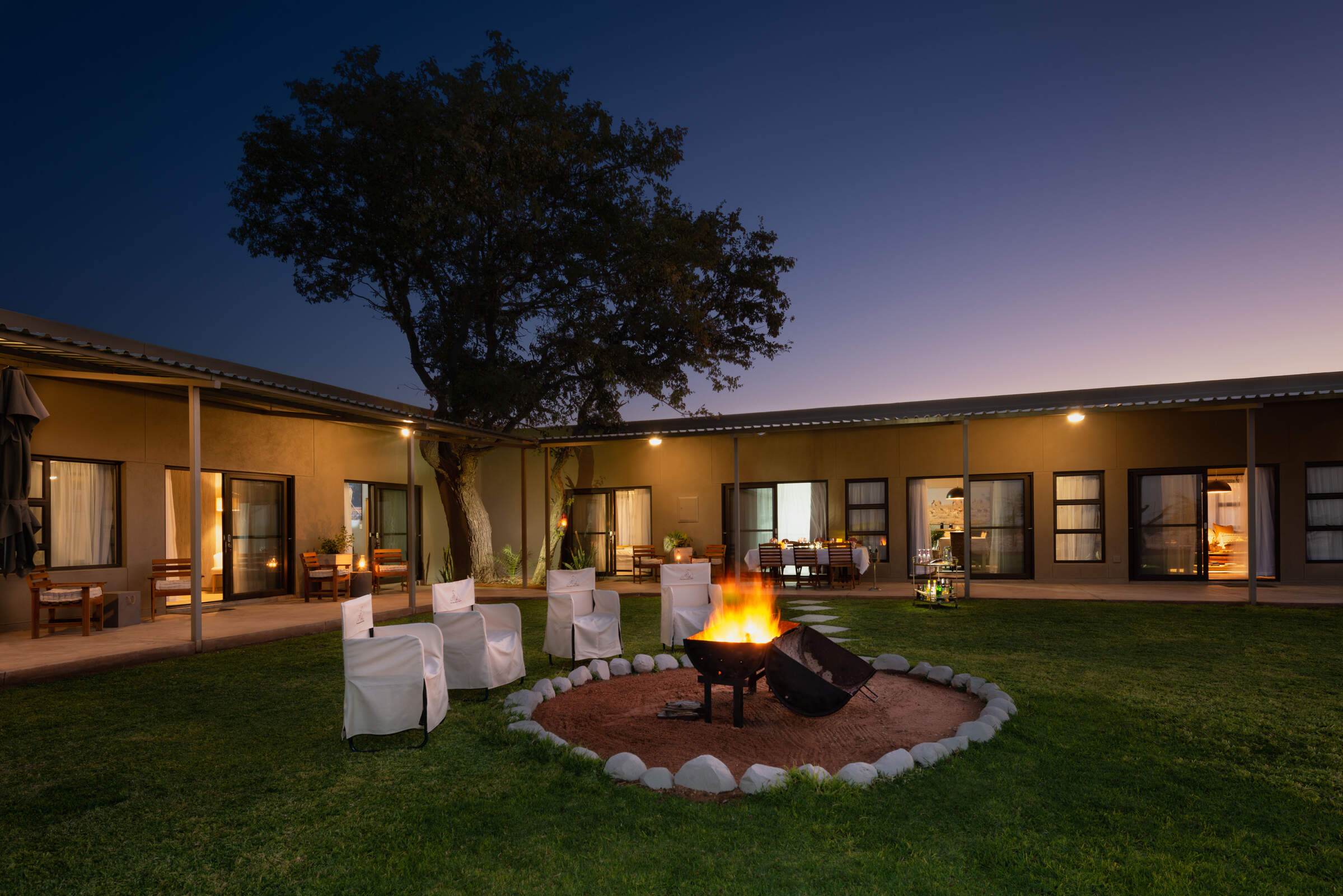
Safari House
The private Safari House on the Etosha Heights reserve is a great option families or friends travelling together.
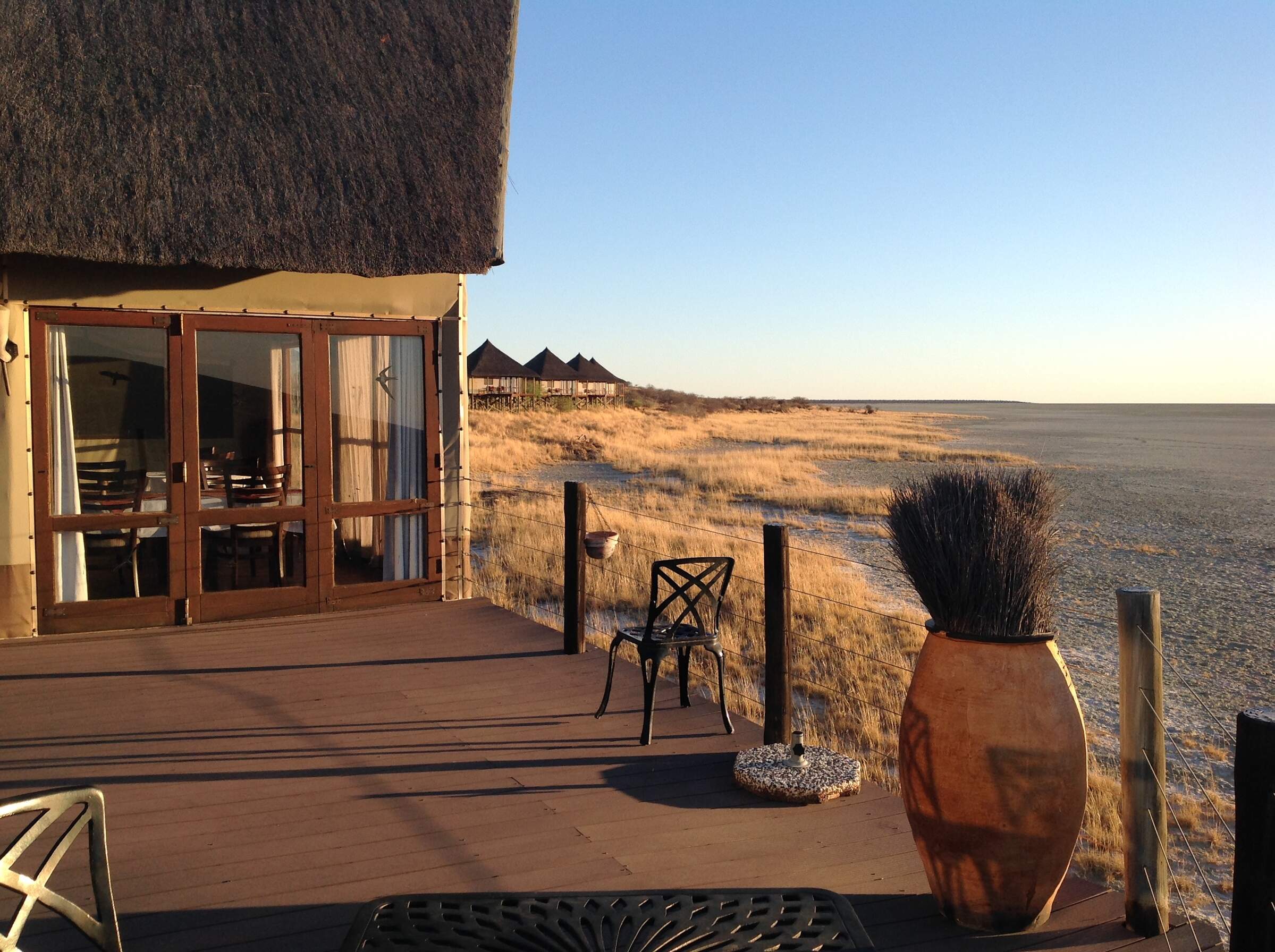
Onkoshi Camp
Onkoshi Camp is owned and run by Namibia Wildlife Resorts. Built on elevated wooden platforms it overlooks Etosha Pan.
When to go to Etosha National Park
Our month by month guide: What it's like to visit Ongava Lodge in Etosha National Park
Jan
Feb
Mar
Apr
May
Jun
Jul
Aug
Sep
Oct
Nov
Dec
Etosha National Park in January
January marks the start of Etosha's main rainy season. The Etosha Pan, usually a vast expanse of white clay, may partially fill with water in good rainy season, attracting flamingos and other migratory birds. The landscape transforms into a lush green oasis, providing ample food for wildlife. Many animals give birth during this time, offering chances to see newborns.
While game viewing can be challenging due to dispersed wildlife and thick vegetation, birdwatching is excellent. Migratory species arrive and birds display breeding plumage. The Okaukuejo and Halali waterholes remain active, though less crowded than in dry months. Visitors should be prepared for occasional thunderstorms and potentially muddy roads, especially around Fischer's Pan.
The vibrant greenery and the presence of young animals make this a fantastic time for photography.
- Variable weather: hot, dry or humid with rain
- Occasional localised thunderstorms in Etosha
- Many animals with young; spectacular birdlife
- Wildlife dispersed, harder to see in Etosha
- Fewer tourists; low rates at most lodges
Our view
This is not a great time to visit
Weather in January
Etosha National Park in February
February is typically Etosha's wettest month. The Etosha Pan may be partially filled, creating a spectacular sight and attracting numerous waterbirds, including flamingos. The landscape is vibrantly green, with many animals raising their young.
While game viewing can be more challenging due to the abundance of water and vegetation, patient observers can spot a variety of wildlife, and share their sightings with fewer other visitors. Birdwatching is excellent, with many species in breeding plumage. The Fairy Tale Forest near Okaukuejo is particularly lush during this time.
Visitors should be prepared for occasional thunderstorms and potentially challenging road conditions, especially in the eastern part of the park. The lush environment and the presence of young animals provide a unique opportunity to witness the park's life cycle.
- Variable weather with occasional thunderstorms
- Bush feels alive; birdlife at its peak in Etosha
- Wildlife in Etosha dispersed, harder to spot
- A variety of newborn and young wildlife to see
- Few tourists; lowest rates for accommodations
Our view
This is not a great time to visit
Weather in February
Etosha National Park in March
As Etosha's main rains taper off, March offers a mix of wet and dry days. The landscape remains green and alive, with insects and smaller animals more easily seen, and many birds and animals are finishing raising their young.
The Etosha Pan may still hold some water, attracting flamingos and other waterbirds. Game viewing improves as the month progresses and animals start to herd together at permanent water sources. The Okaukuejo, Halali, and Namutoni waterholes become increasingly active.
Birdwatching remains excellent, with many migrant species still around. The Dolomite Camp area in the west offers good chances to spot rarer antelope species like black-faced impala.
The transition from wet to dry conditions provides a fascinating glimpse into the park's seasonal changes.
- Weather variable; thunderstorms less frequent
- Animals well-fed after months of abundance
- Wildlife in Etosha still dispersed, harder to see
- Migrant birds prepare to leave the park
- Few visitors; rates often low at Etosha lodges
Our view
A good time to visit, with pros & cons
Weather in March
Etosha National Park in April
April typically sees dry weather dominating in Etosha, with decreasing chances of rain. The landscape remains relatively green, and animals are in excellent condition with shiny coats. Increasing numbers of elephants seen as the herds begin to use the permanent water sources. The Okaukuejo waterhole becomes particularly active, especially in the evenings.
Photographers benefit from clear air and lush, green backdrop. Night drives from camps like Halali offer chances to see nocturnal animals. Birdwatching remains good, though some migratory species begin to depart, and the Fischer's Pan area can still be productive for waterbirds if there's residual water from the rainy season.
The shift towards drier conditions improves the chances of wildlife sightings.
- Becoming drier and cooler, especially at night
- Few visitors except around Easter; low rates
- Wildlife in Etosha still relatively spread out
- Migrant birds have largely left the park
- Fresh air and often green landscapes in Etosha
Our view
A good time to visit, with pros & cons
Weather in April
Etosha National Park in May
May marks the transition to Etosha's dry season. The landscape starts to dry out, but may still retain some greenery. Wildlife increasingly gathers around permanent water sources, making game viewing more predictable. The Okaukuejo, Halali, and Namutoni waterholes become excellent spots for animal observation – especially when floodlit after dark. Night drives offer opportunities to see nocturnal species like leopards and owls.
The Etosha Pan is usually dry, creating a stark, shimmering backdrop for photography. Birdwatching remains good, with 340 different species recorded in the park. The western part of the park, accessible from Dolomite Camp, offers chances to see rarer species like black rhino in a less frequently explored environment. The dry season's onset brings a new rhythm to the park's wildlife dynamics.
- Lovely weather: dry, warm days & cool nights
- Etosha drying out; landscapes still partly green
- Fantastic air clarity; ideal for photography
- Visitor numbers low; lodge rates still low
- Wildlife starting to gather at Etosha waterholes
Our view
A very good time to visit
Weather in May
Etosha National Park in June
June brings cooler temperatures with clear skies to Etosha. The landscape is drying out, encouraging animals like elephants, rhino and giraffe to waterholes. This makes for excellent game viewing, especially at popular spots like Okaukuejo and Halali. Night drives on private Etosha reserves, like Ongava, are particularly productive.
The dry Etosha Pan creates mirages and a unique backdrop for photography, perhaps a lone ostrich crossing the stark salt crust. Birdwatching remains rewarding, with bright colours standing out in drier vegetation. The Namutoni area, with its fort, provides a mix of wildlife viewing and historical interest.
Cooler temperatures making walking safaris enjoyable in Etosha’s adjacent wildlife reserves, like Etosha Heights.
- Clear days, cold nights in Etosha National Park
- Great air quality; perfect for photographers
- Moderate lodge rates; shoulder season begins
- Wildlife gravitates to Etosha's waterholes
- Some greenery remains in parts of the park
Our view
A very good time to visit
Weather in June
Etosha National Park in July
July is prime time for wildlife viewing in Etosha as animals, in particular predators, are more active later in cool mornings and earlier in the afternoons. The dry landscape concentrates animals around waterholes, making for predictable and spectacular sightings. The Okaukuejo waterhole is particularly active, especially at night when black rhinos often visit and jostle for position with elephants.
The stark white Etosha Pan creates a unique backdrop for photography, with heat mirages shimmering on the horizon.
The dry season's peak offers unparalleled wildlife viewing opportunities. Game drives along the southern edge of the pan offer excellent opportunities to see large herds of zebra, wildebeest, and antelope. Birdwatching is rewarding around waterholes, with species like eagles and vultures frequently sighted.
- Dry days, crisp nights; excellent for stargazing
- European holidays begin; more families visit
- Peak season; high rates, lodges often full
- Fantastic wildlife watching
- Animals concentrate around Etosha waterholes
Our view
A very good time to visit
Weather in July
Etosha National Park in August
August is the height of the dry season in Etosha, offering excellent wildlife viewing opportunities. Animals concentrate around waterholes, with a variety of predators and prey often seen at any one time. Night viewing at the more secluded yet floodlit waterhole at Halali is often rewarded with sightings of shyer leopard and porcupine.
The dry season's intensity brings wildlife into sharp focus. The open plains along the edge of the Etosha Pan are good for seeing large herds of zebra and wildebeest, and often cheetah too. Predators often lie in wait for their prey near waterholes offering sightings of hunts to patient game viewers.
Birdwatching remains rewarding, with raptors like bateleur and martial eagles frequently sighted.
- Dry days, cold nights; clear skies in Etosha
- Busy by Namibian standards; family rooms full
- Peak season; high rates, advanced booking needed
- Excellent wildlife viewing in Etosha National Park
- Large herds gather at Etosha's waterholes
Our view
Fantastic: the very best time to visit
Weather in August
Etosha National Park in September
September offers peak wildlife viewing in Etosha. The extreme dry conditions concentrate animals around waterholes, making for spectacular sightings of multiple species. The Okaukuejo waterhole is particularly active, with elephants, rhinos, and lions frequently visiting.
The last months of the dry season showcases the park's wildlife at its most concentrated. The stark landscape of the dry Etosha Pan creates dramatic backdrops for photography. Game drives along the pan's edge offer chances to see large herds of zebra, springbok, and oryx as well as lion prides and cheetah. The western part of the park, accessible from Dolomite Camp, often provides a more exclusive safari experience with good rhino sightings. Night drives on adjacent private reserves like Hobatere offer opportunities to see nocturnal animals such as genets and aardwolves.
Birdwatching is excellent, with species standing out clearly in the sparse vegetation.
- One of the best months for Etosha wildlife viewing
- Warm days, cold nights; temperatures rising
- Colourful birds stand out against a starker backdrop
- Etosha's waterholes teem with diverse wildlife
- High season; book Etosha accommodations early
Our view
Fantastic: the very best time to visit
Weather in September
Etosha National Park in October
October is typically Etosha's hottest and driest month, offering excellent wildlife viewing. The intense heat and dry conditions heighten the drama of wildlife interactions.
Animals concentrate heavily around waterholes, with spectacular sightings common at Okaukuejo, Halali, and other permanent water sources. Patient photographers spending time at waterholes are richly rewarded. Large herds of zebra, wildebeest, and various antelope species can be seen along the pan's southern edge. Predator sightings, including lions and cheetahs, are frequent as they target gathered and weakened prey. Thinning vegetation at Namutoni makes it easier to spot the dimunitive Damara dik dik – Namibia’s smallest antelope.
Birdwatching remains rewarding, with raptors and colourful rollers often spotted.
- Peak wildlife-viewing month in Etosha National Park
- Hot and dry; Etosha feels like a desert
- Air can be hazy with dust in some areas
- Peak time; expect high season rates in Etosha
- Etosha lodges often full, especially early October
Our view
A very good time to visit
Weather in October
Etosha National Park in November
November marks the transition to Etosha's rainy season, bringing change to the landscape and wildlife behaviour. Early rains may green the vegetation, dispersing some wildlife from waterholes. However, game viewing remains good, especially around permanent water sources like Okaukuejo and Halali’s floodlit waterholes.
The first rains can create dramatic scenes as animals celebrate the water's arrival, with plains game often giving birth. Predators often give birth at this time too, to coincide with the time of plenty. Migratory birds begin to return, and birds take to the skies in spectacular aerial shows as they catch more active insects.
Seasonal wildflowers and dramatic, thundery skies add interest to photographic compositions. Summer rains bring reptiles such as tortoises and chameleons out into the open. The onset of rains brings a refreshing change to the park's ecosystem.
- Variable month in Etosha, depending on rains
- If rain comes, explosion of vegetation and life
- Baby animals often born around mid-month
- Shoulder season; mid-range rates offer value
- Showers more likely later in the month in Etosha
Our view
A good time to visit, with pros & cons
Weather in November
Etosha National Park in December
December is often a drier month before January sees the main rainy season begin. The landscape begins to show green from November's rain and the odd rainshower in December. Many animals have young, so there’s the chance to watch frolicking calfs and lambs.
The combination of rainfall and sunshine rejuvenates the park's landscapes and wildlife. While wildlife disperses away from the waterholes with increased water availability, game viewing remains good, especially on the open plains along the southern edge of Etosha Pan. Birdwatching is excellent, with many species in breeding plumage and displaying for mates as well as migrant species arriving.
Visitors should be prepared for occasional thunderstorms and potentially muddy roads, especially in the eastern part of the park.
- Hot, sometimes humid with cooling showers
- Landscapes green where rain has fallen in Etosha
- New life and energy in the park's ecosystem
- Excellent for birdwatchers in Etosha
- Larger animals may be harder to spot
Our view
This is not a great time to visit
Weather in December

Looking for inspiration on where to travel next?
Visit our trip chooser to explore your options and find inspiration for your perfect African adventure
Inspire me